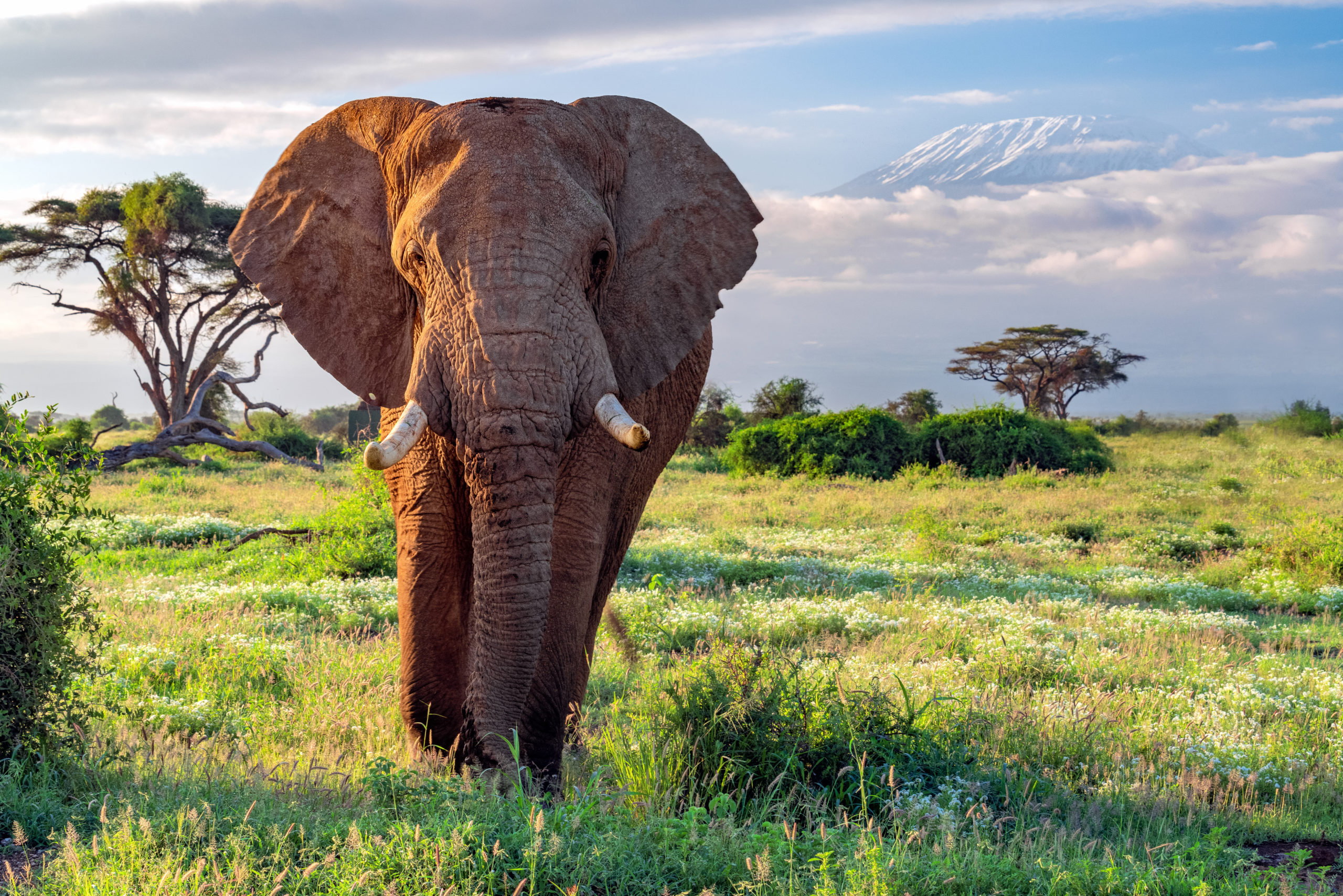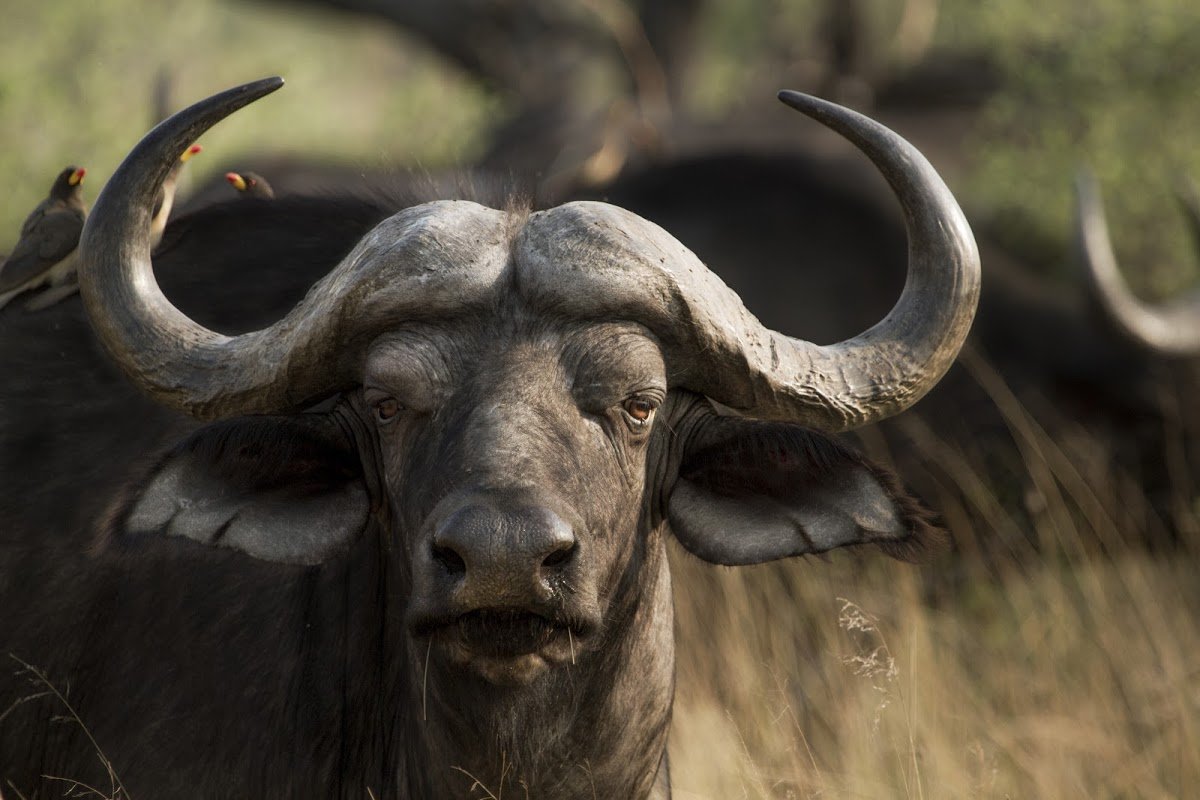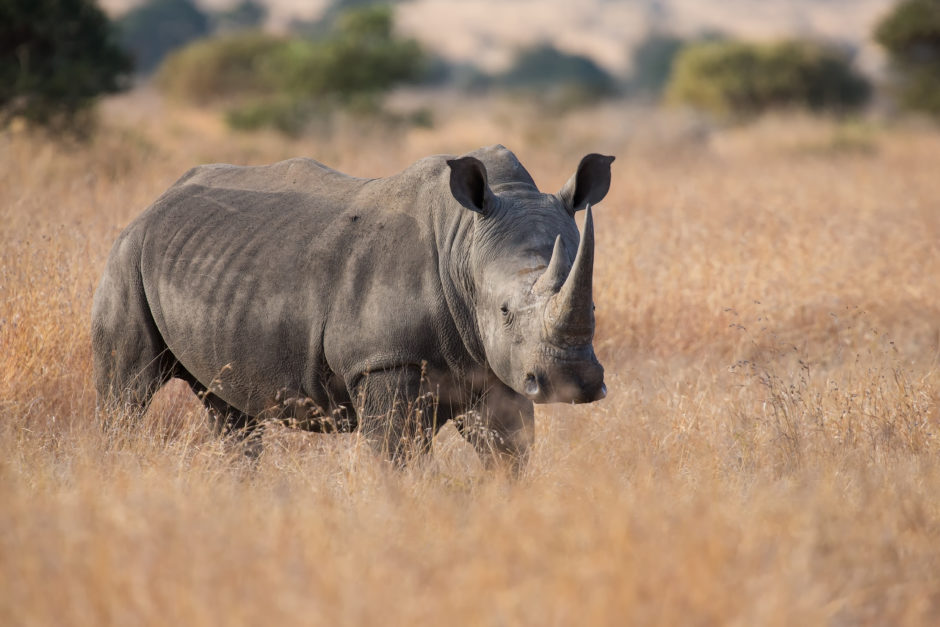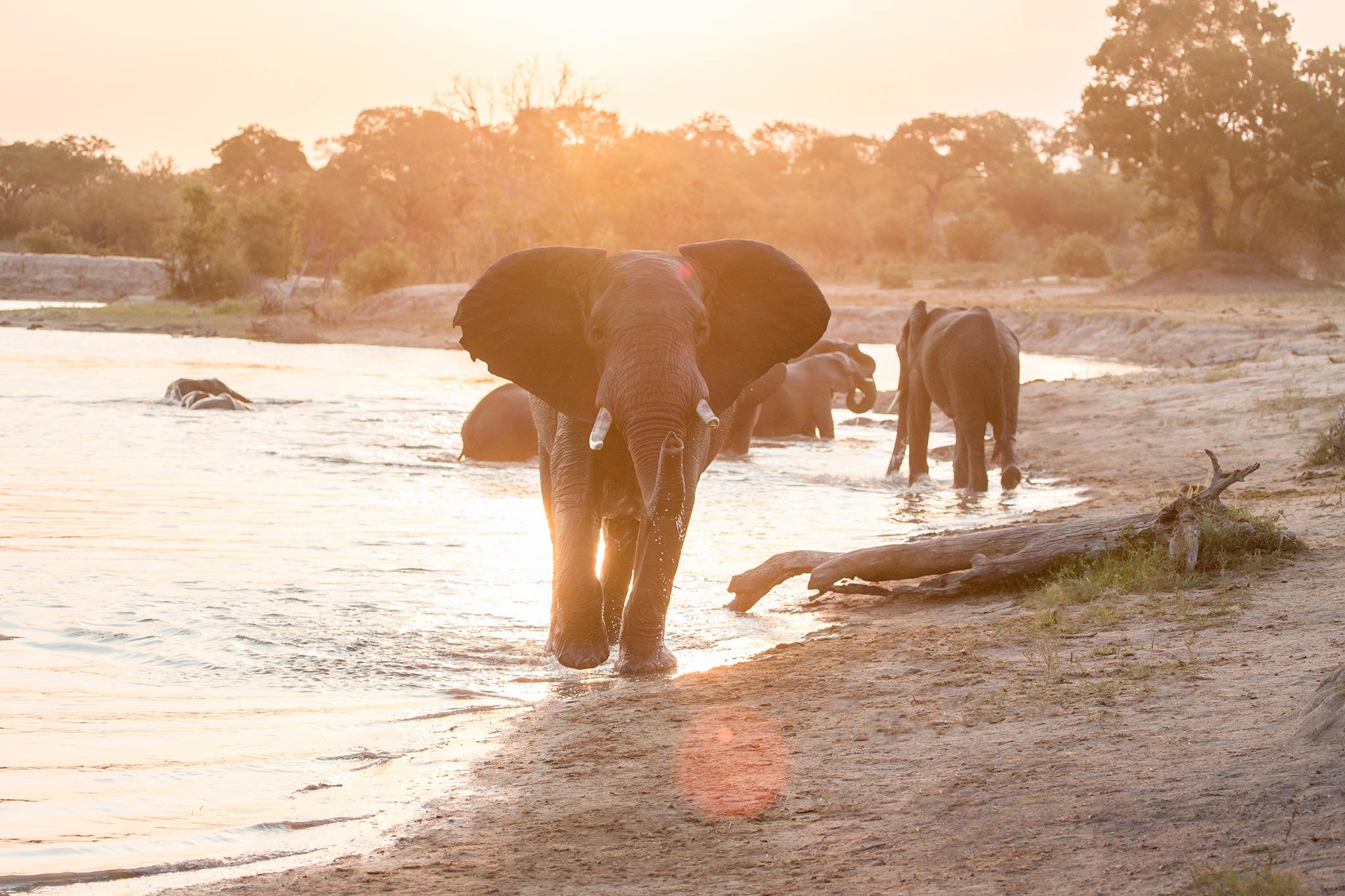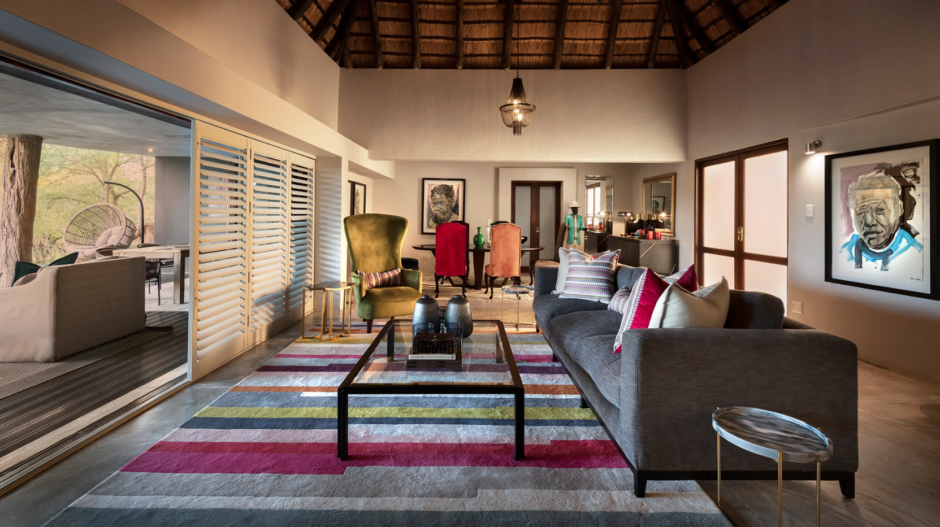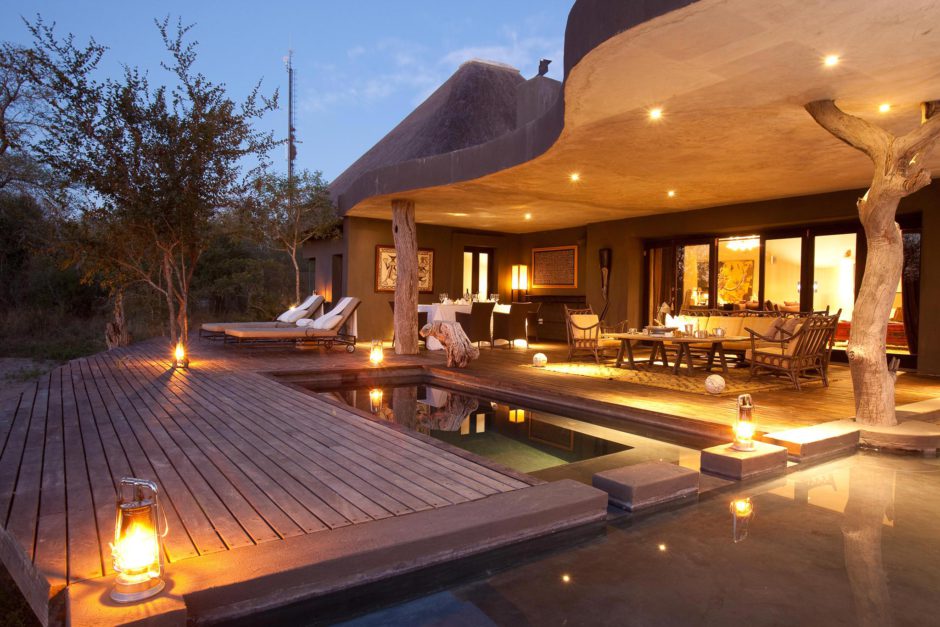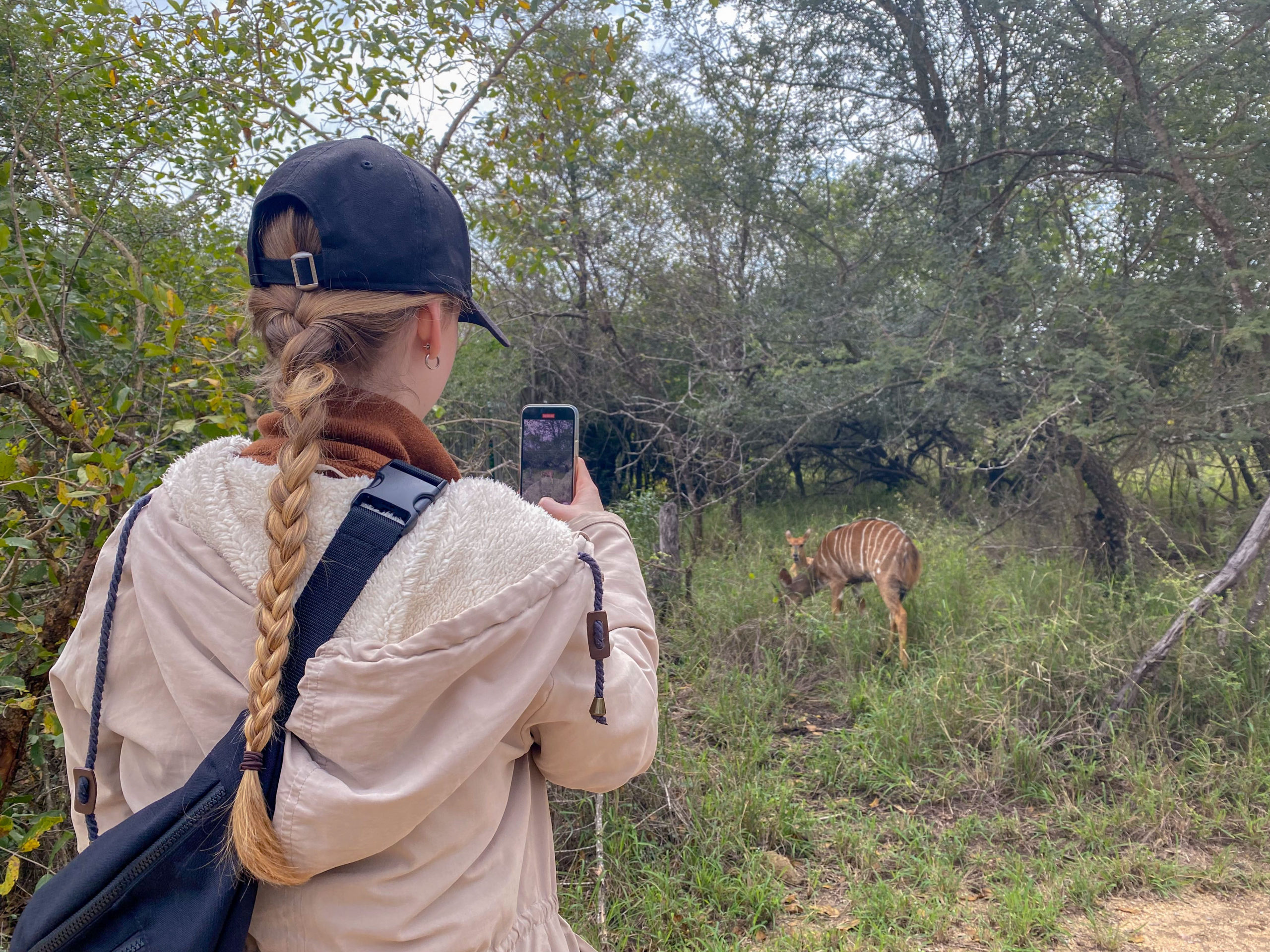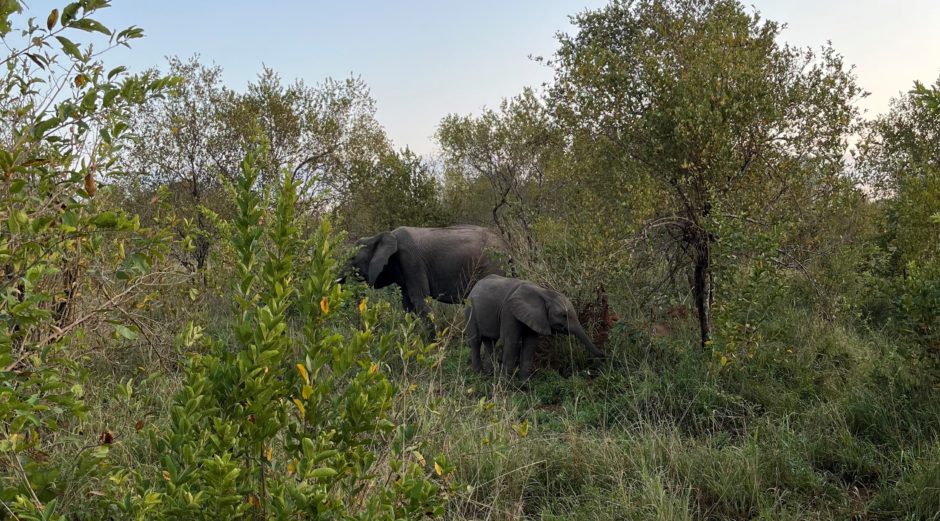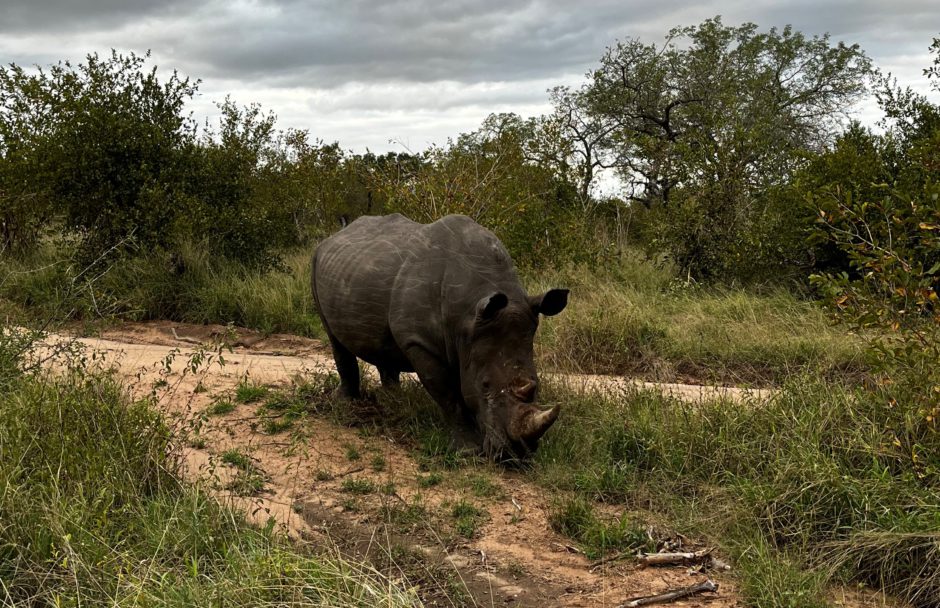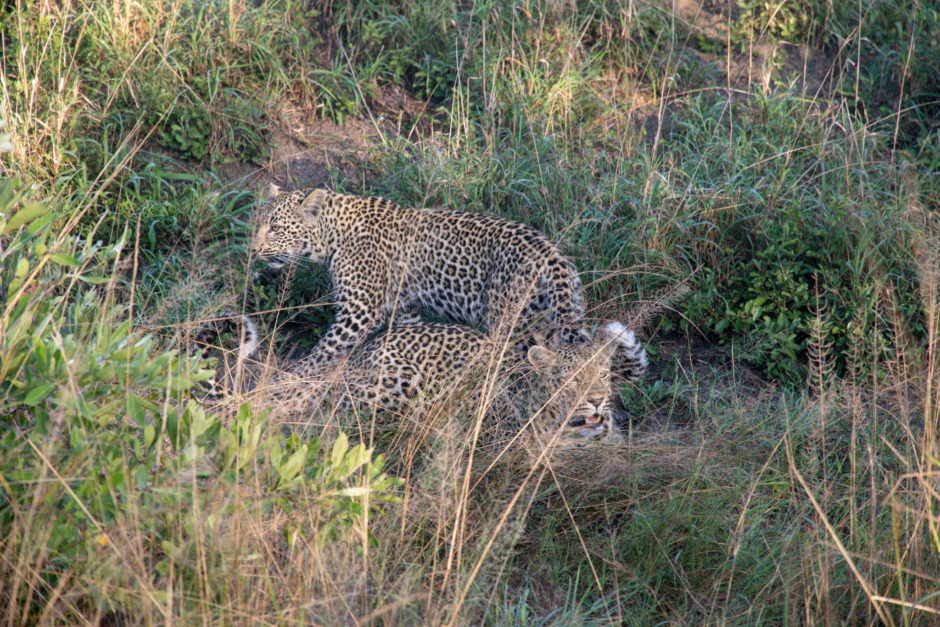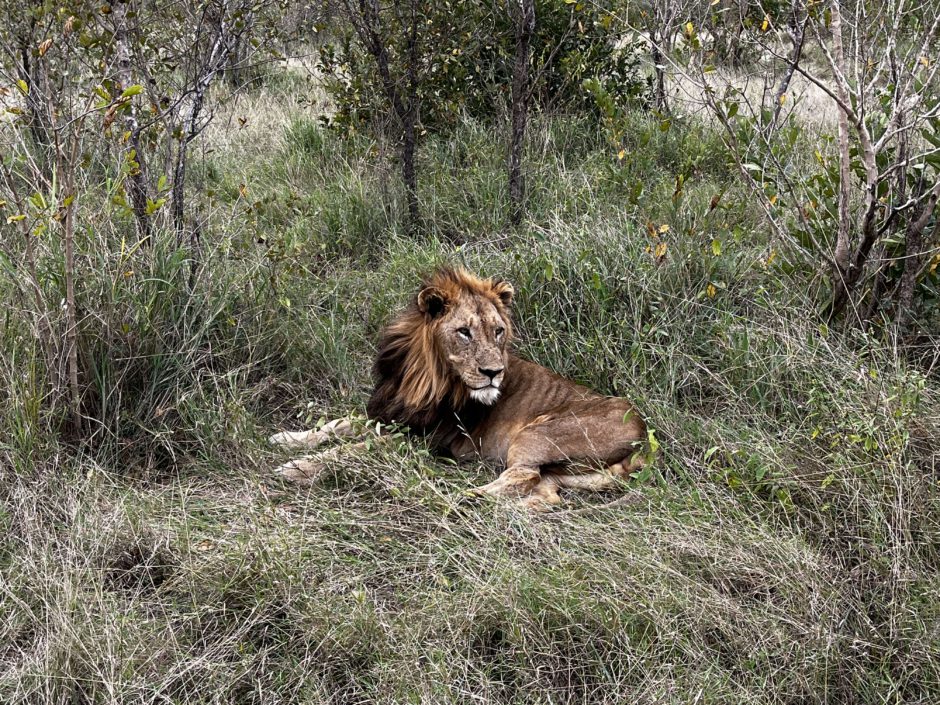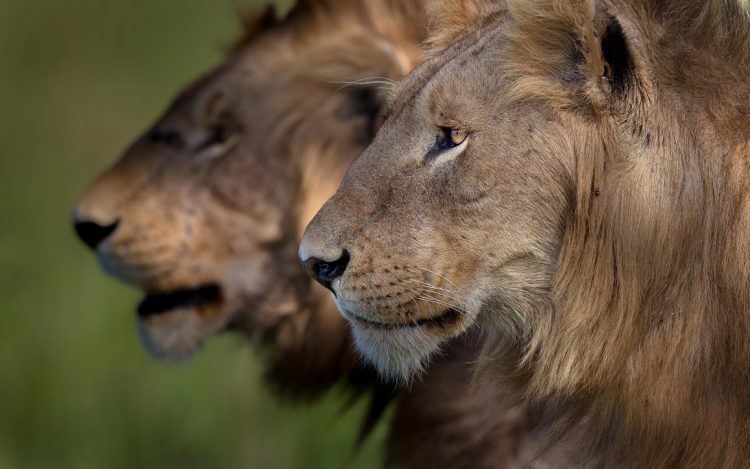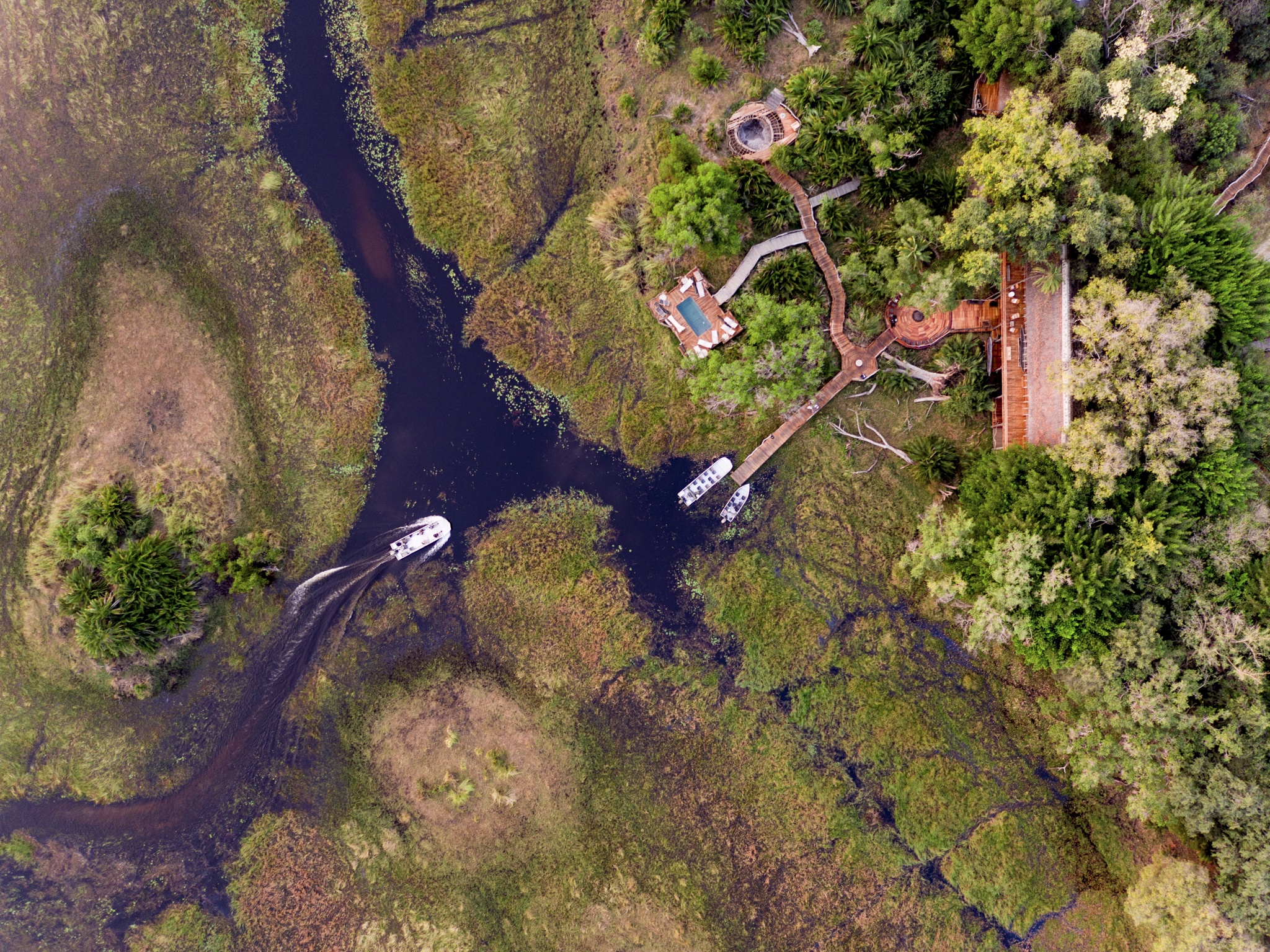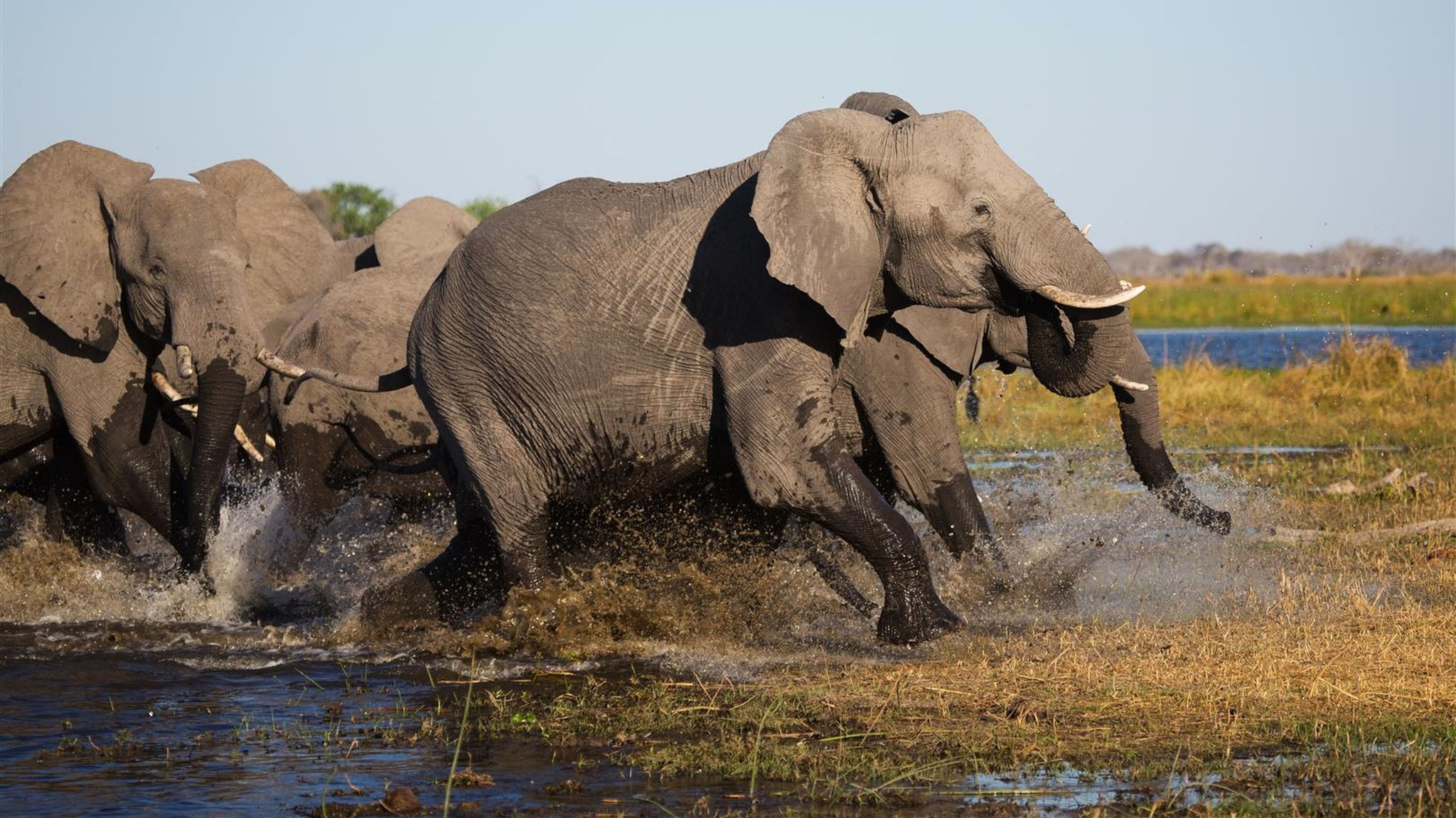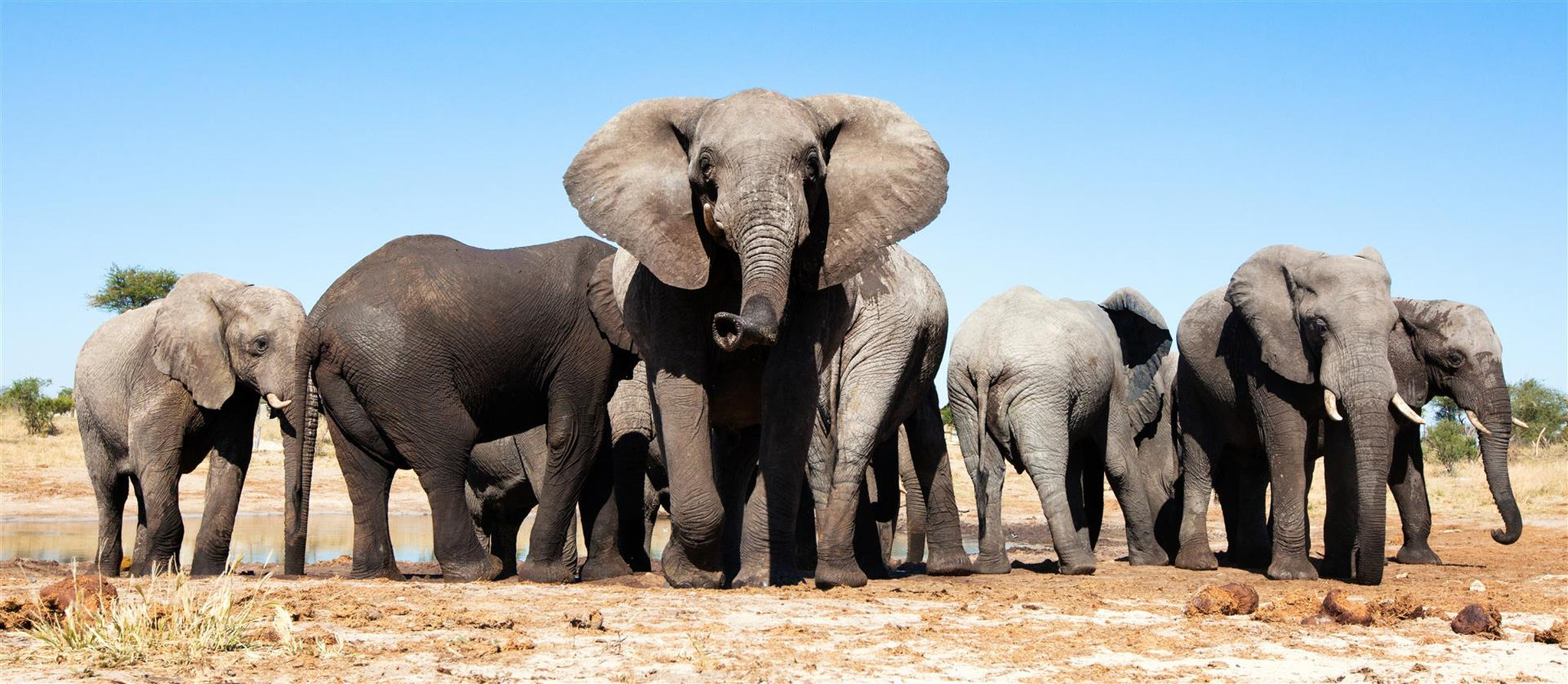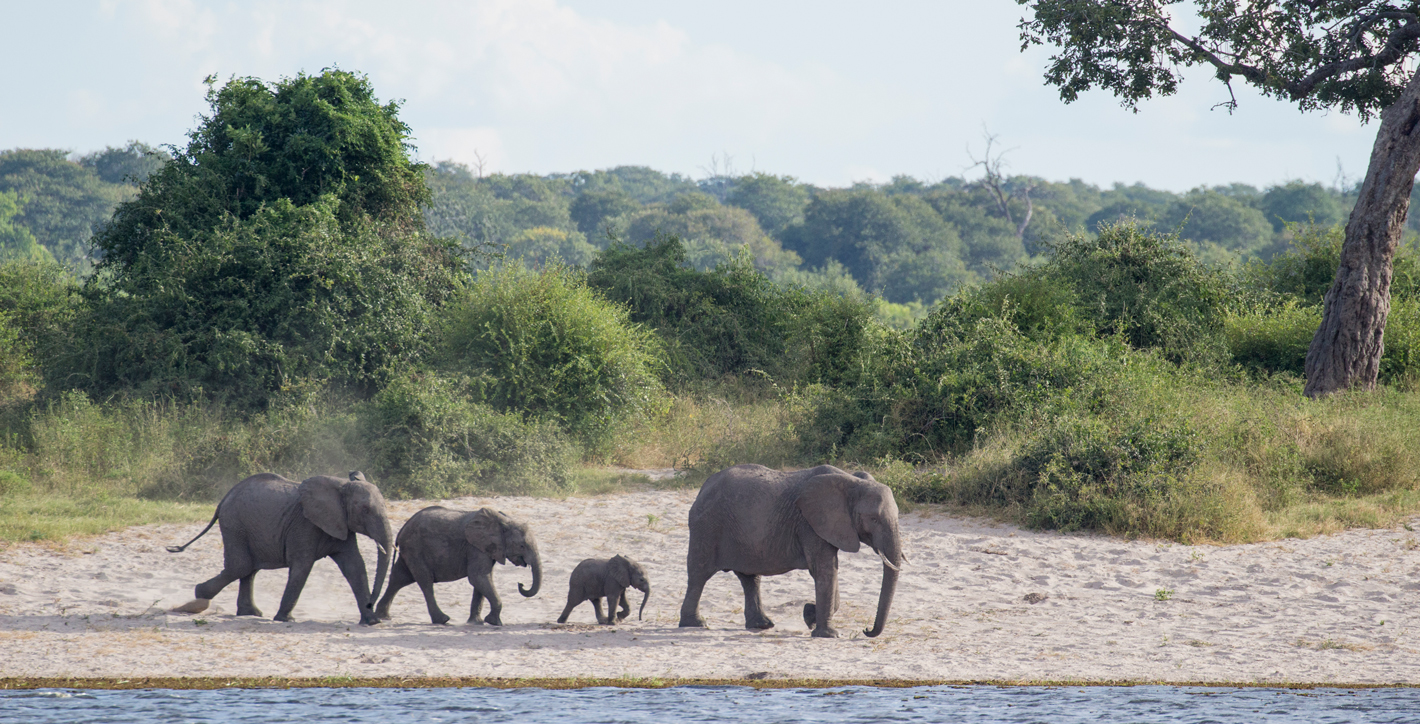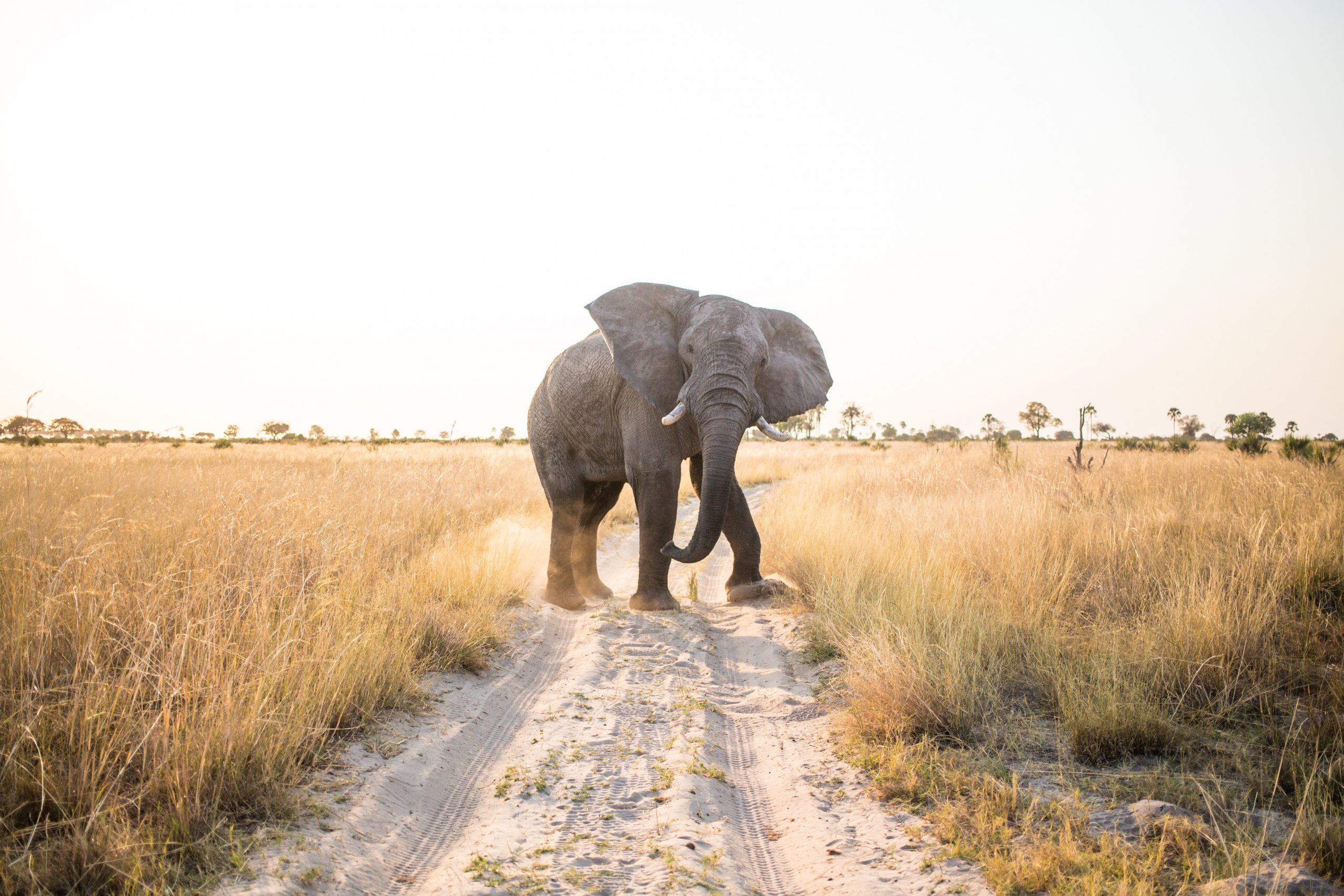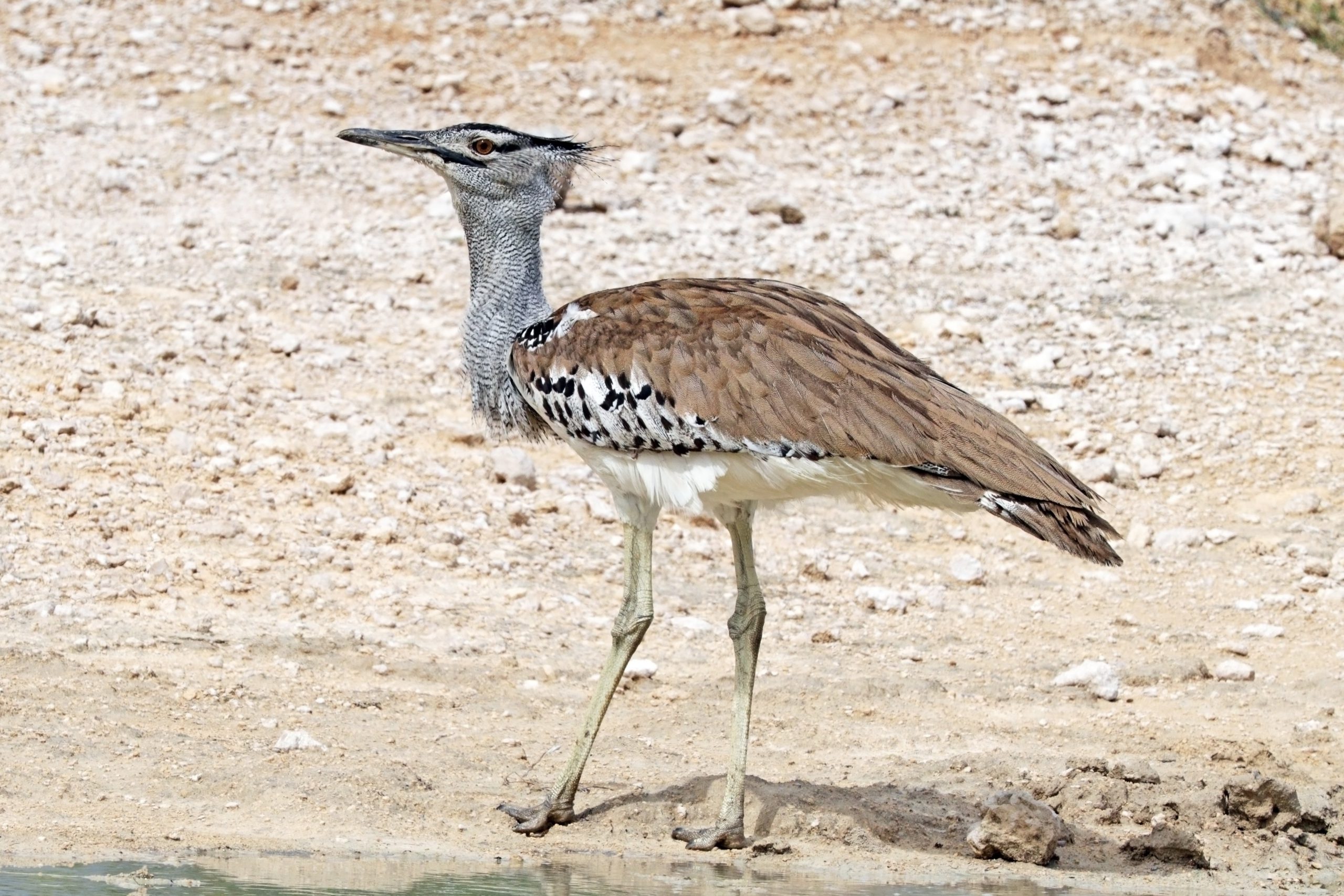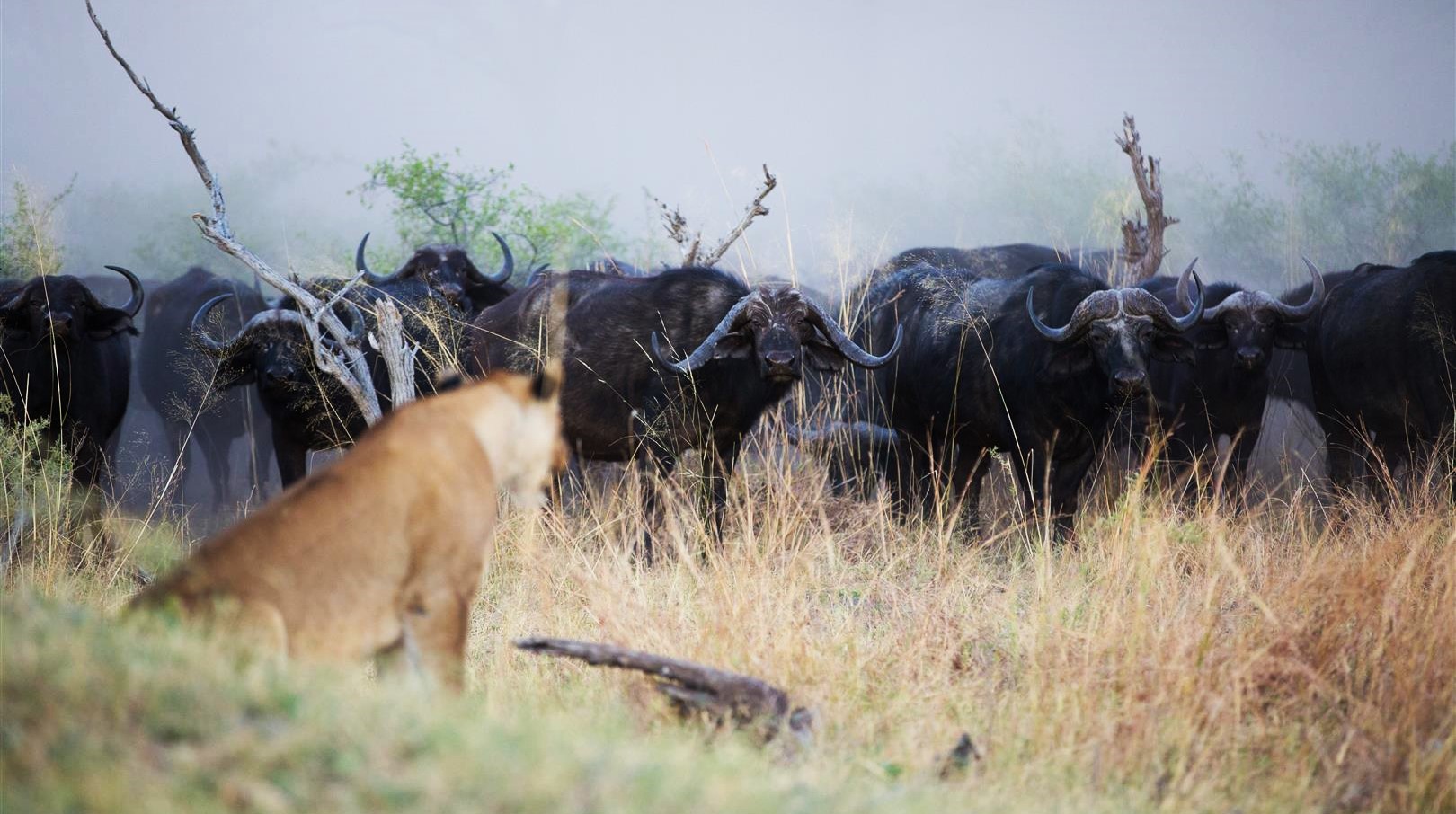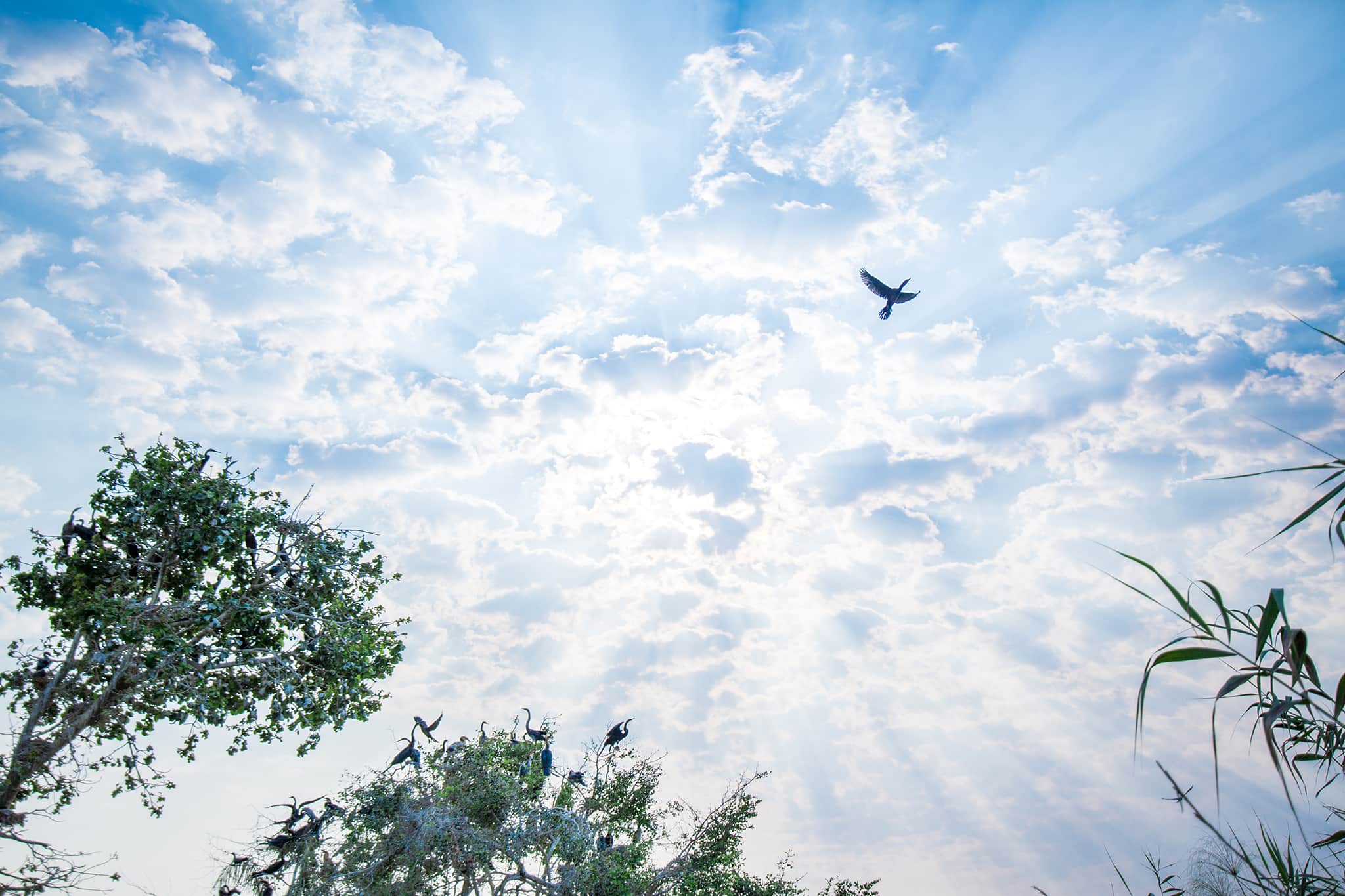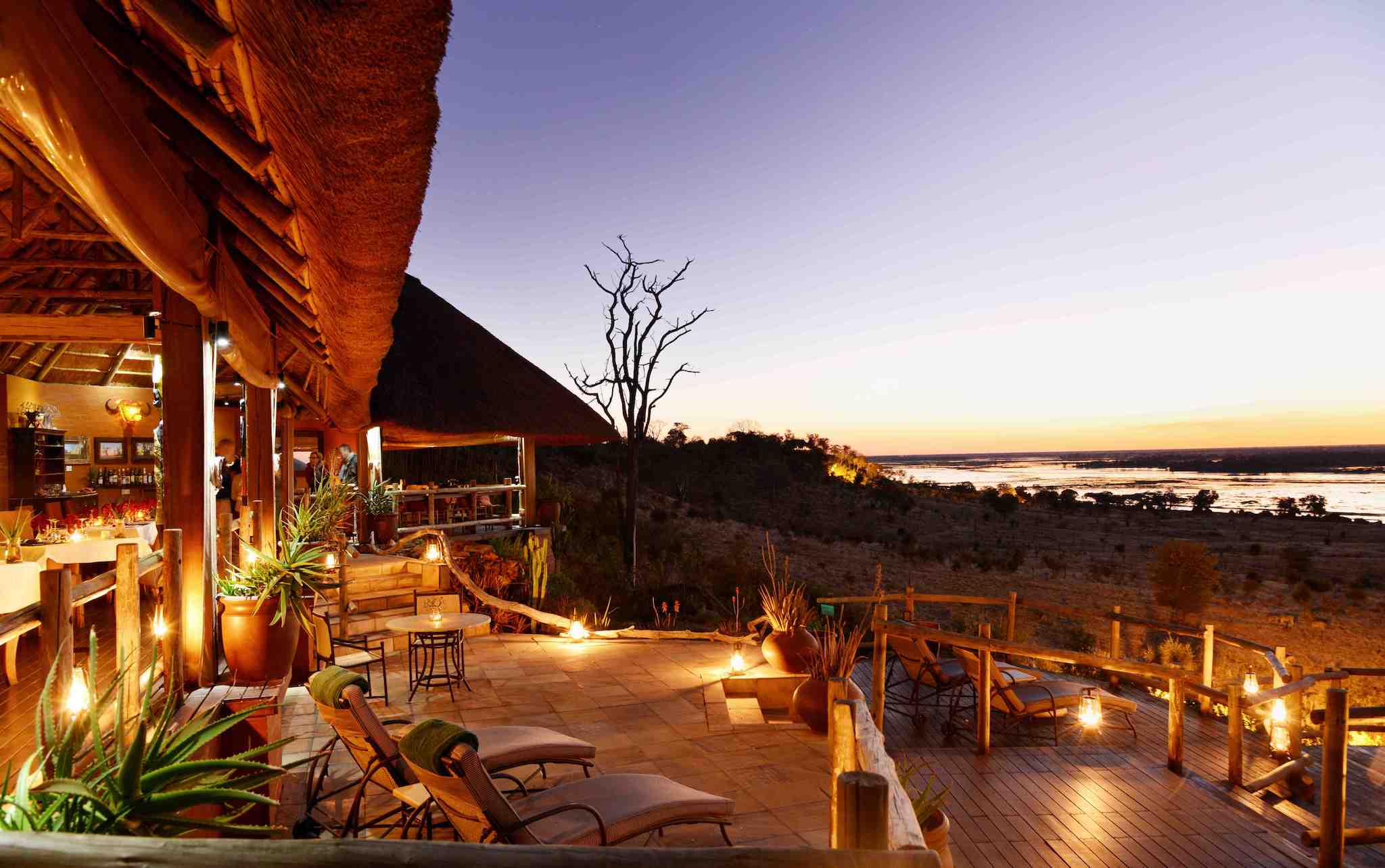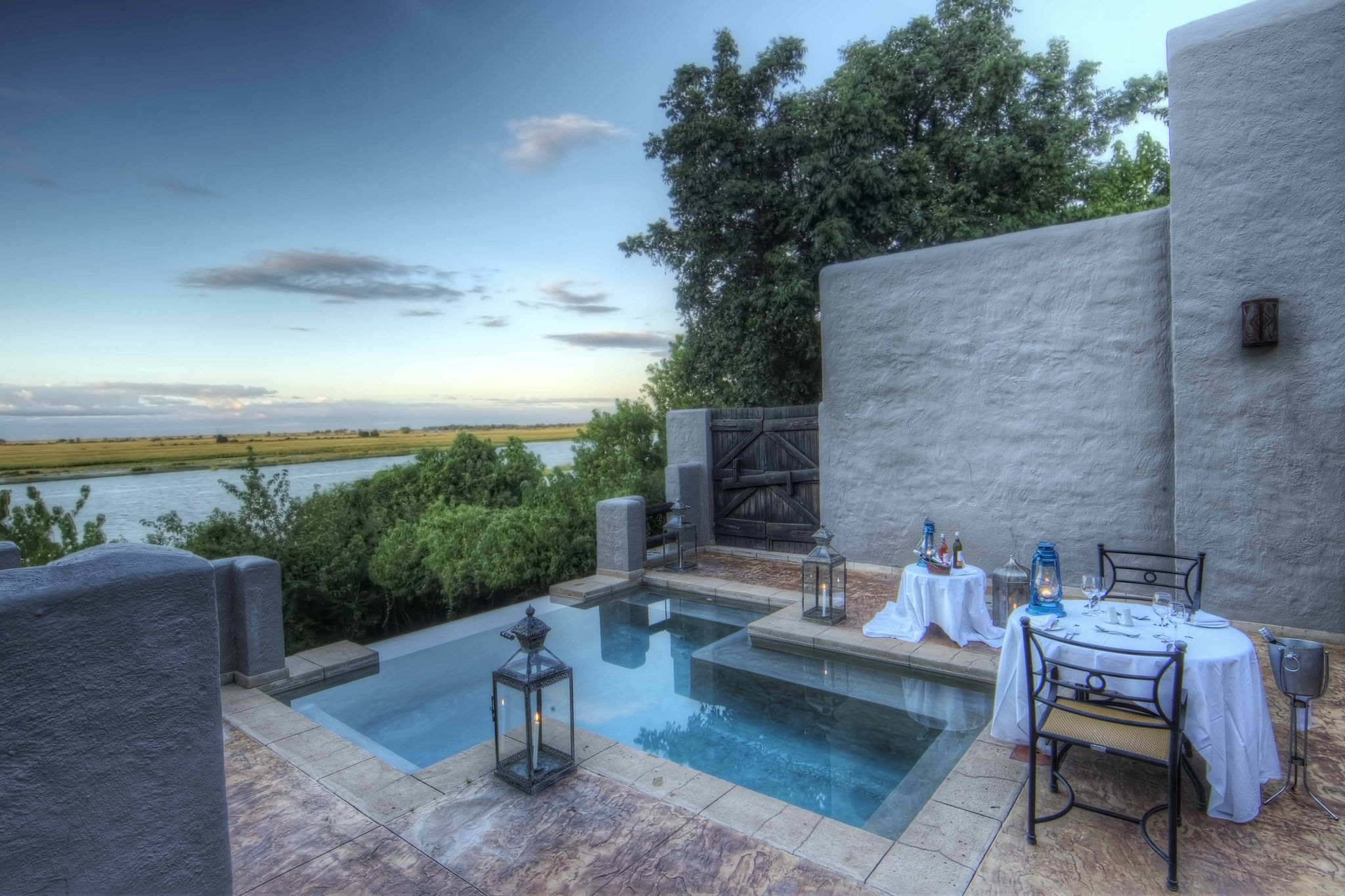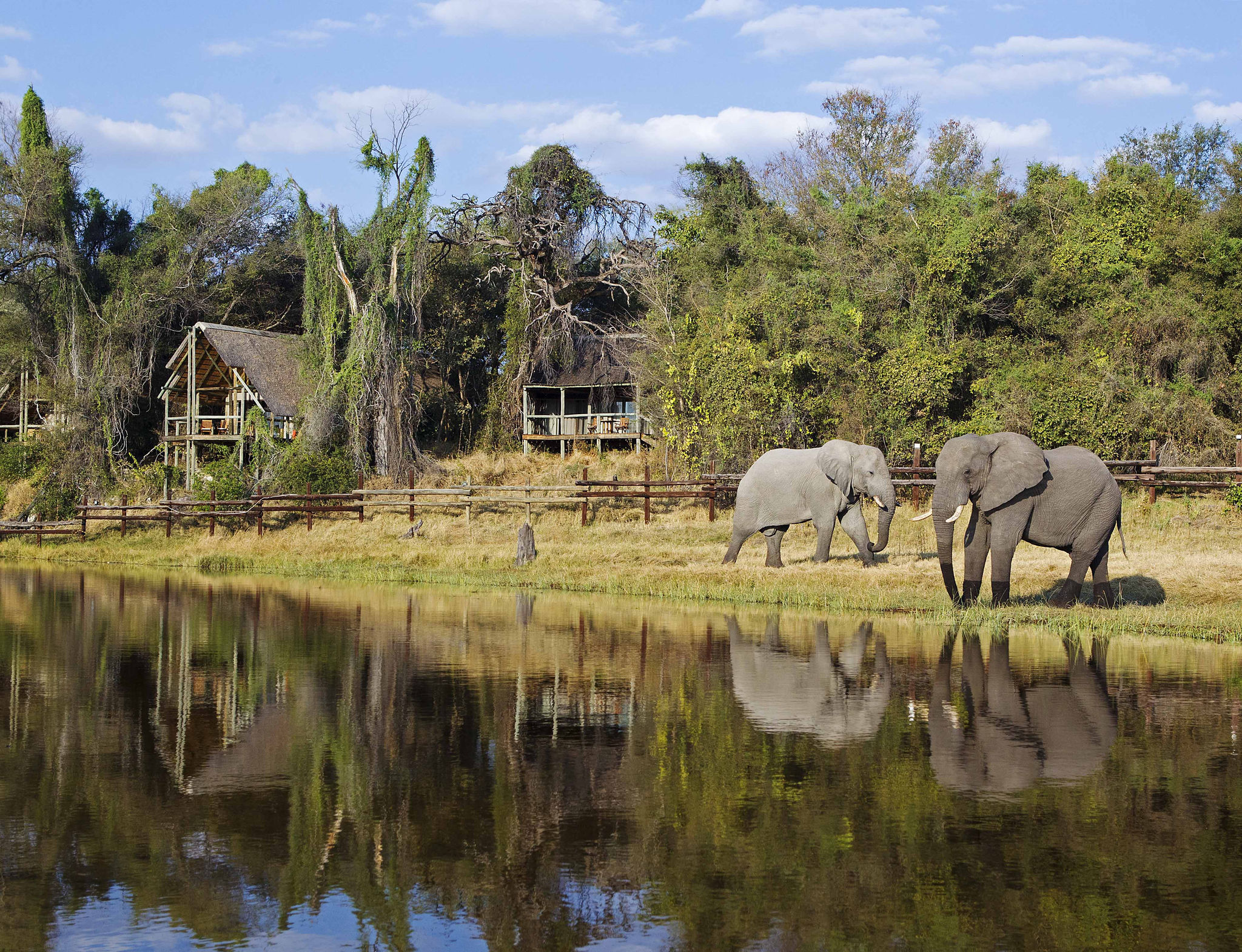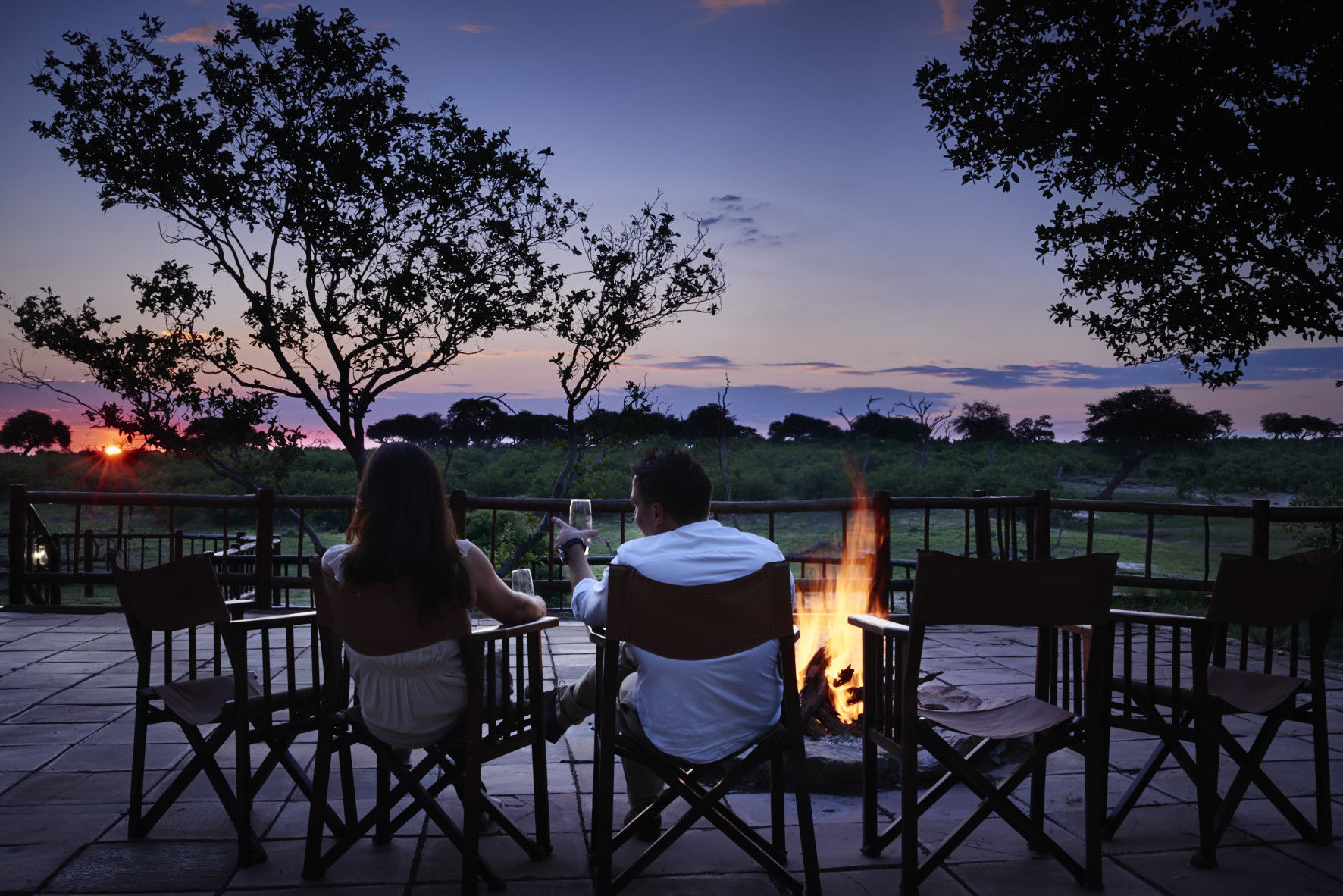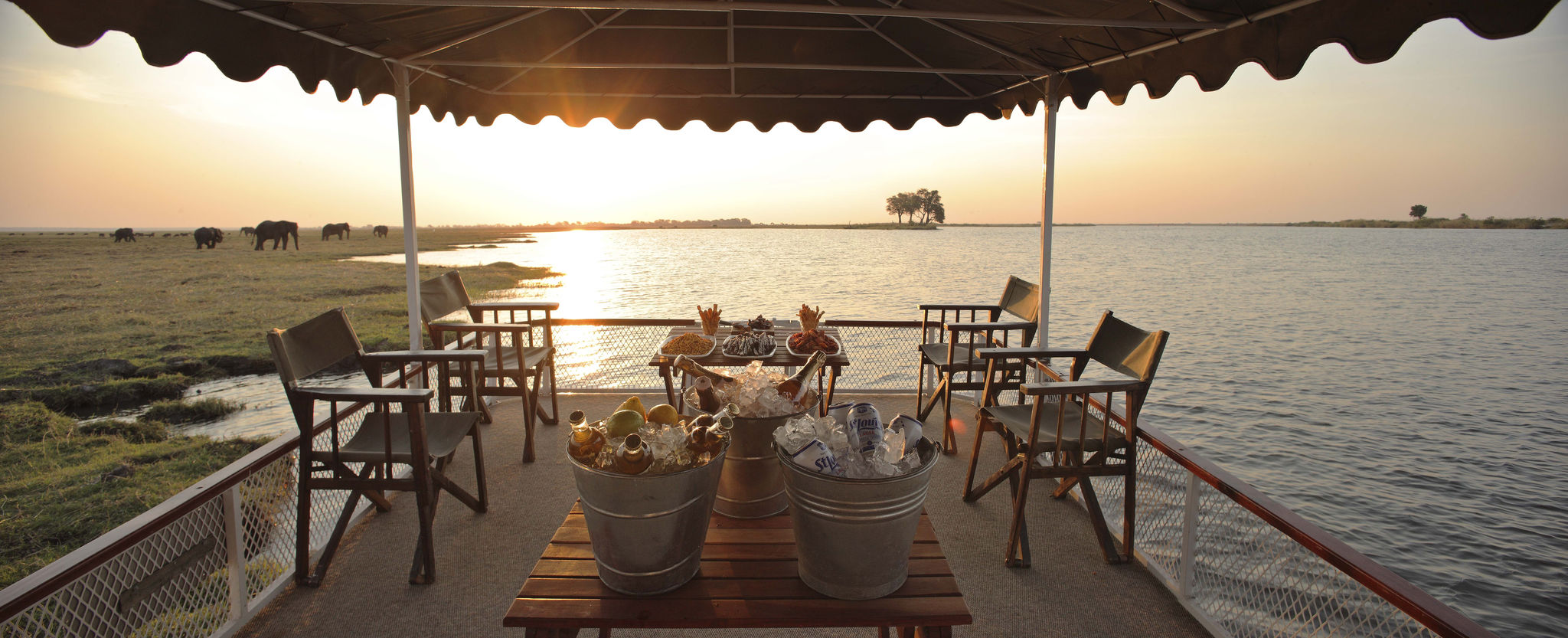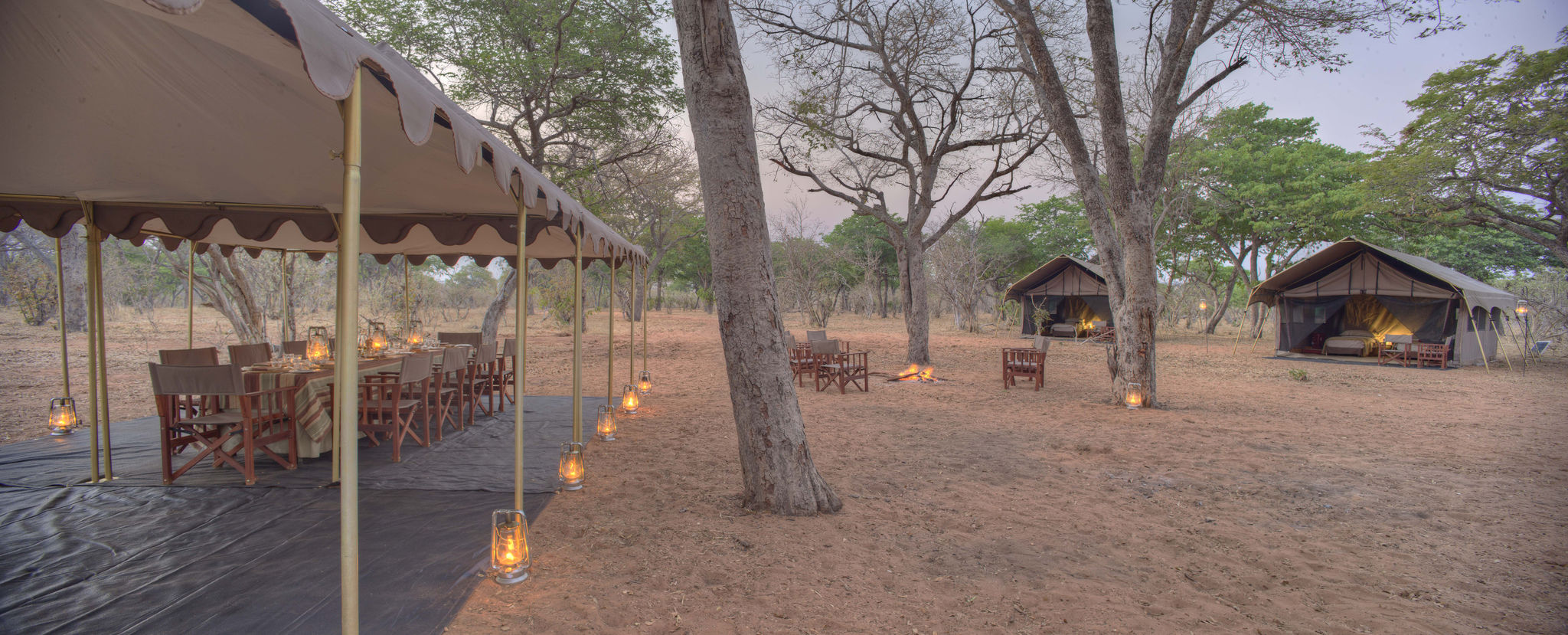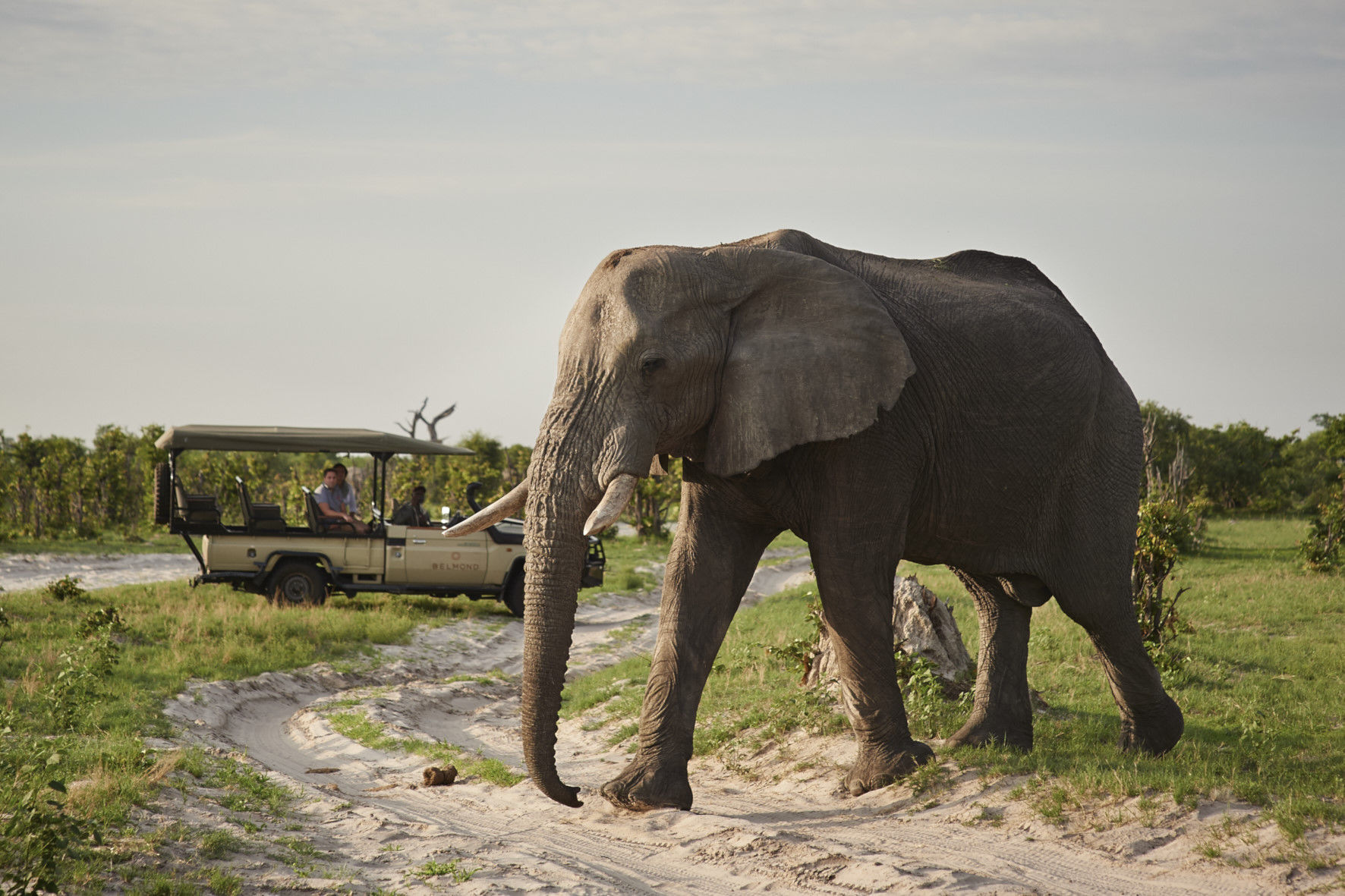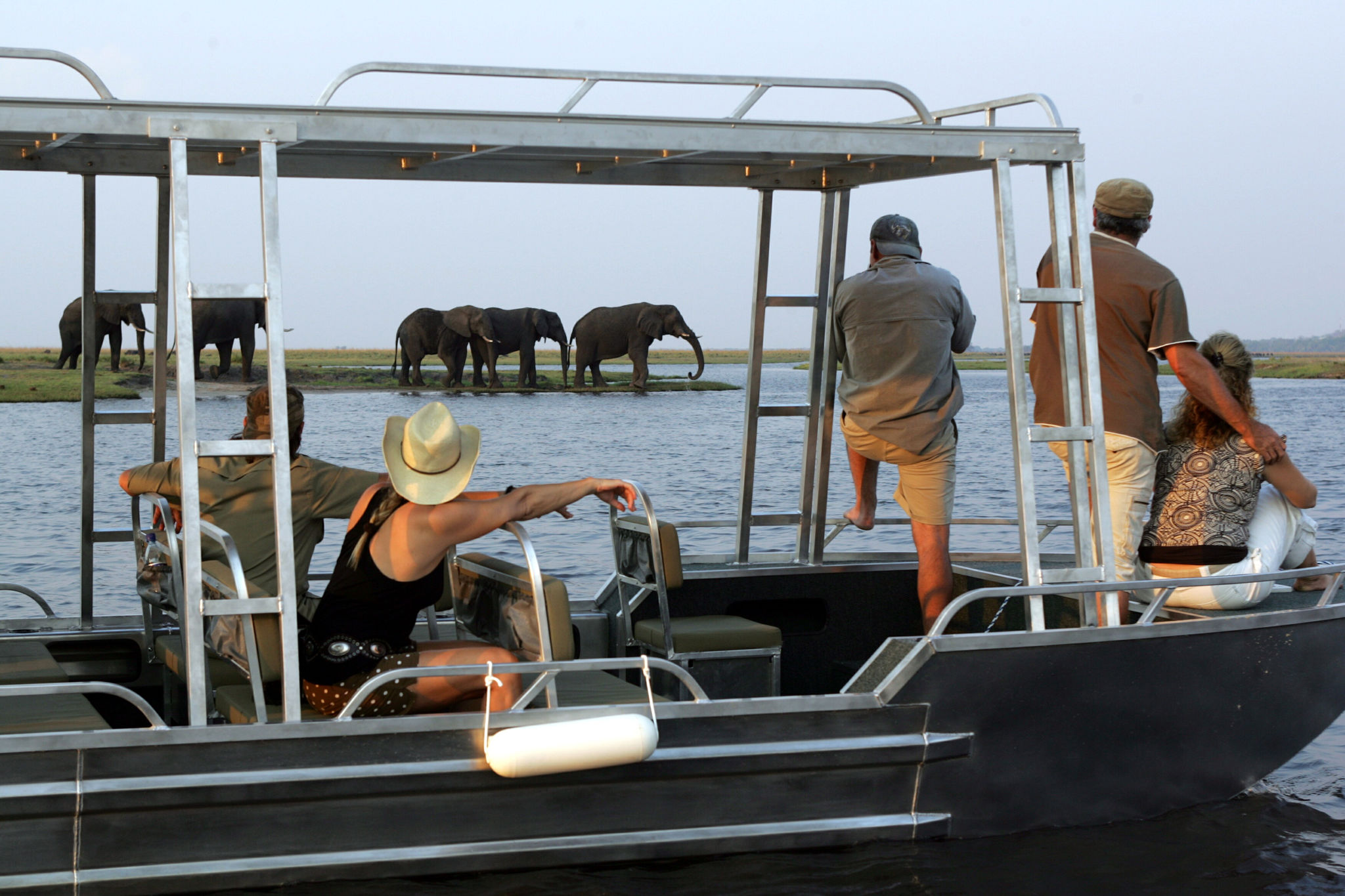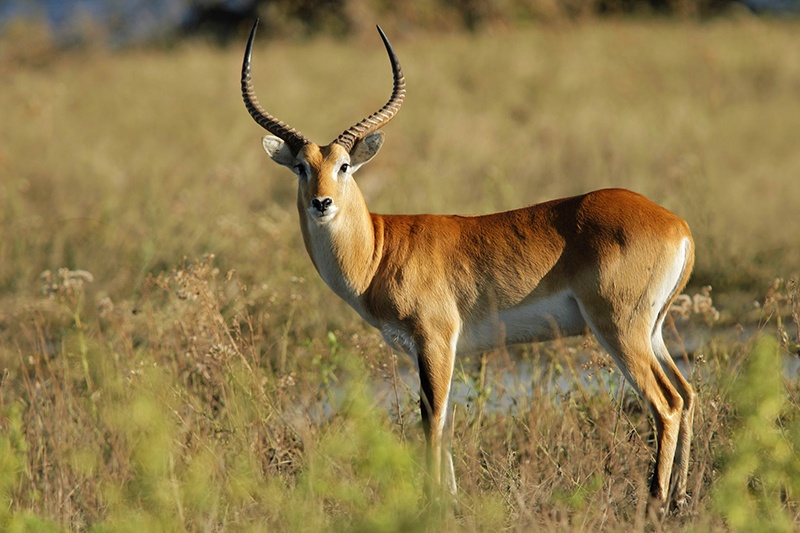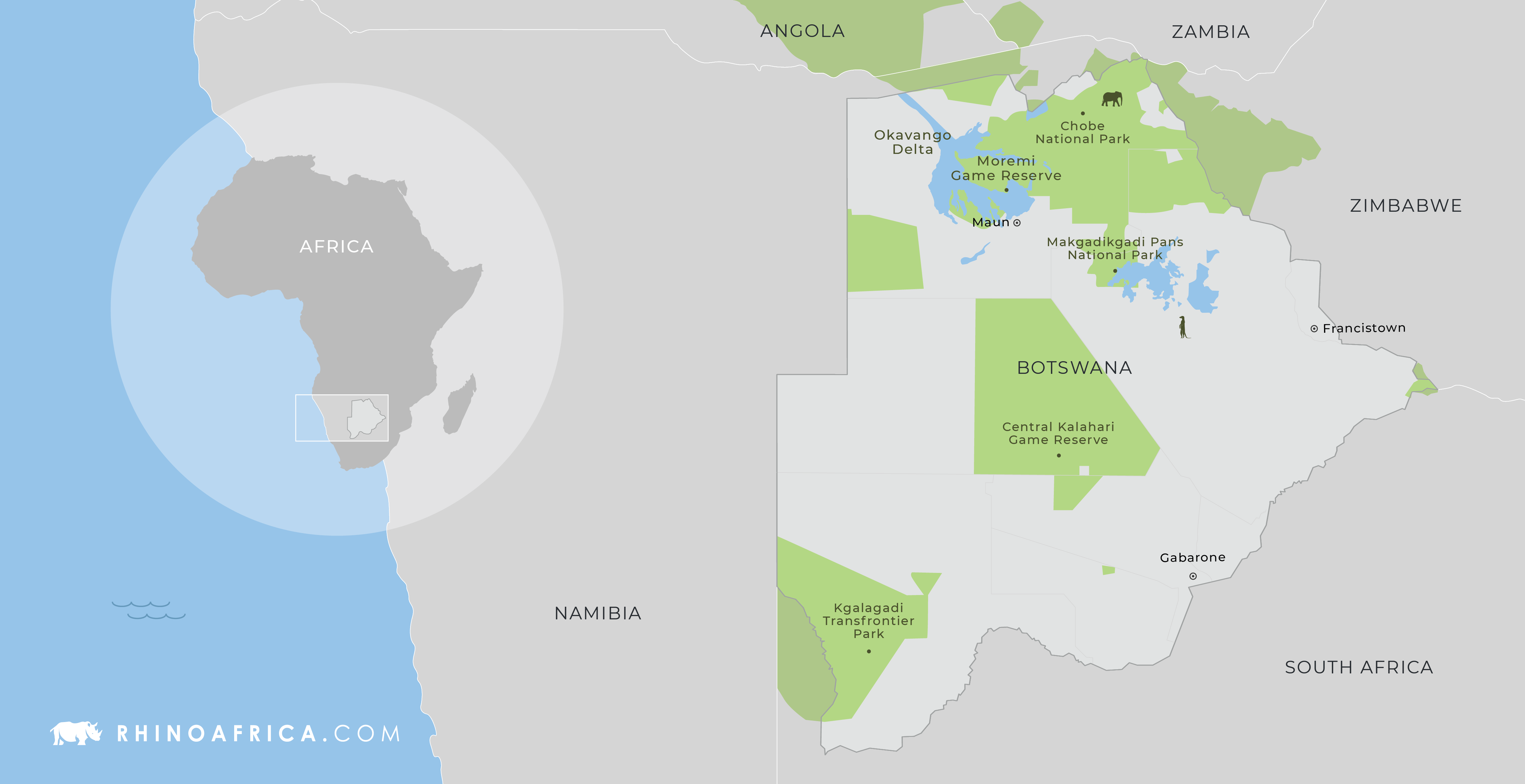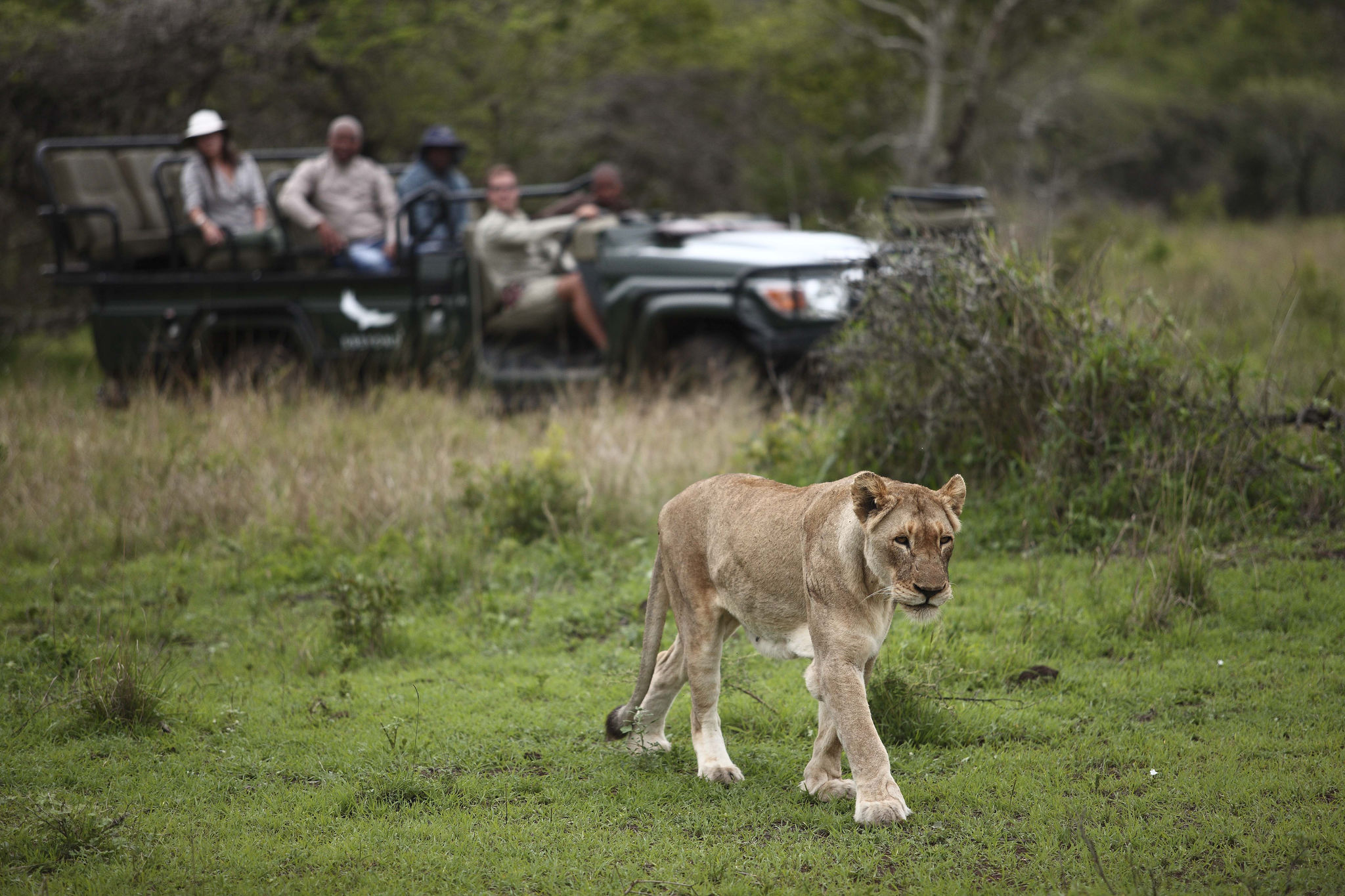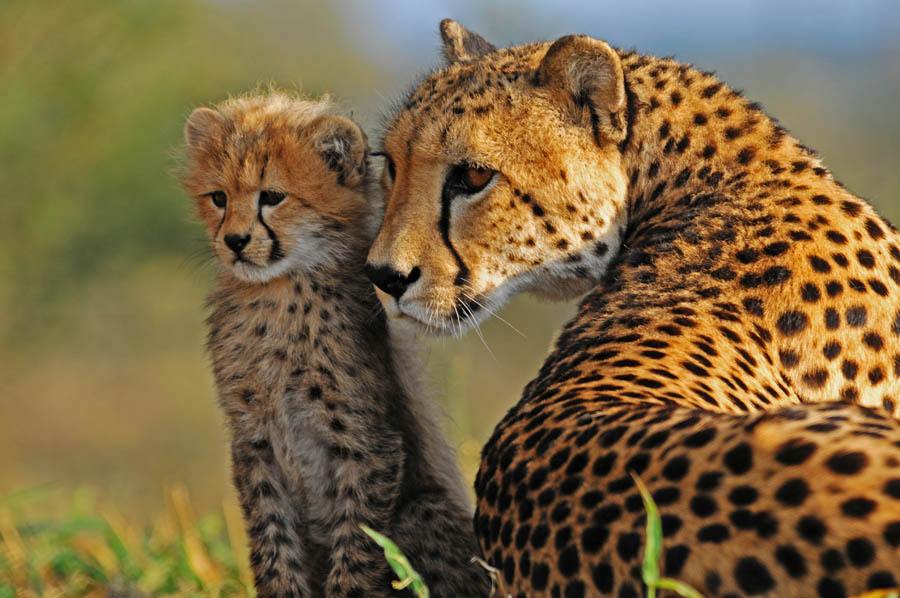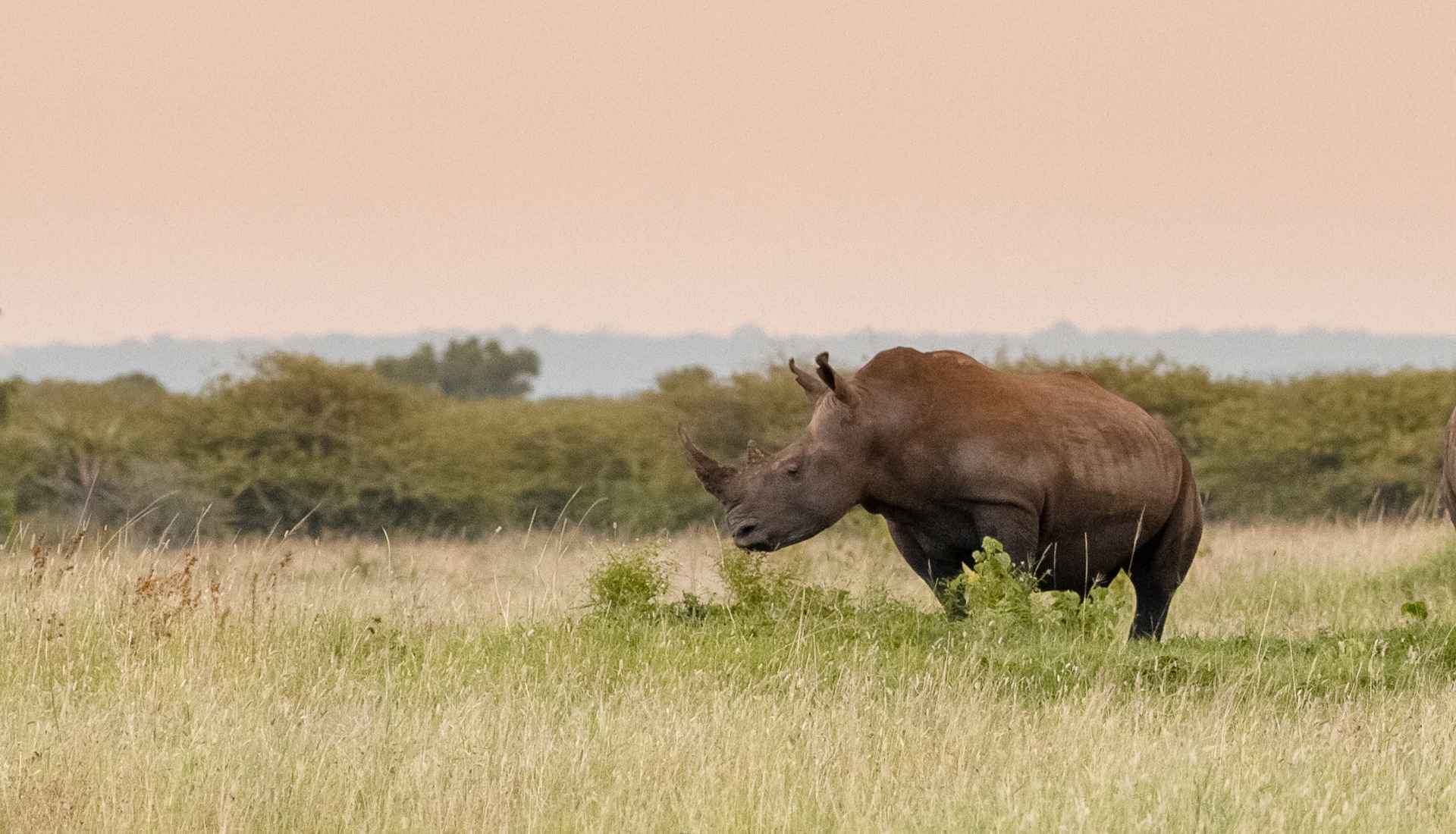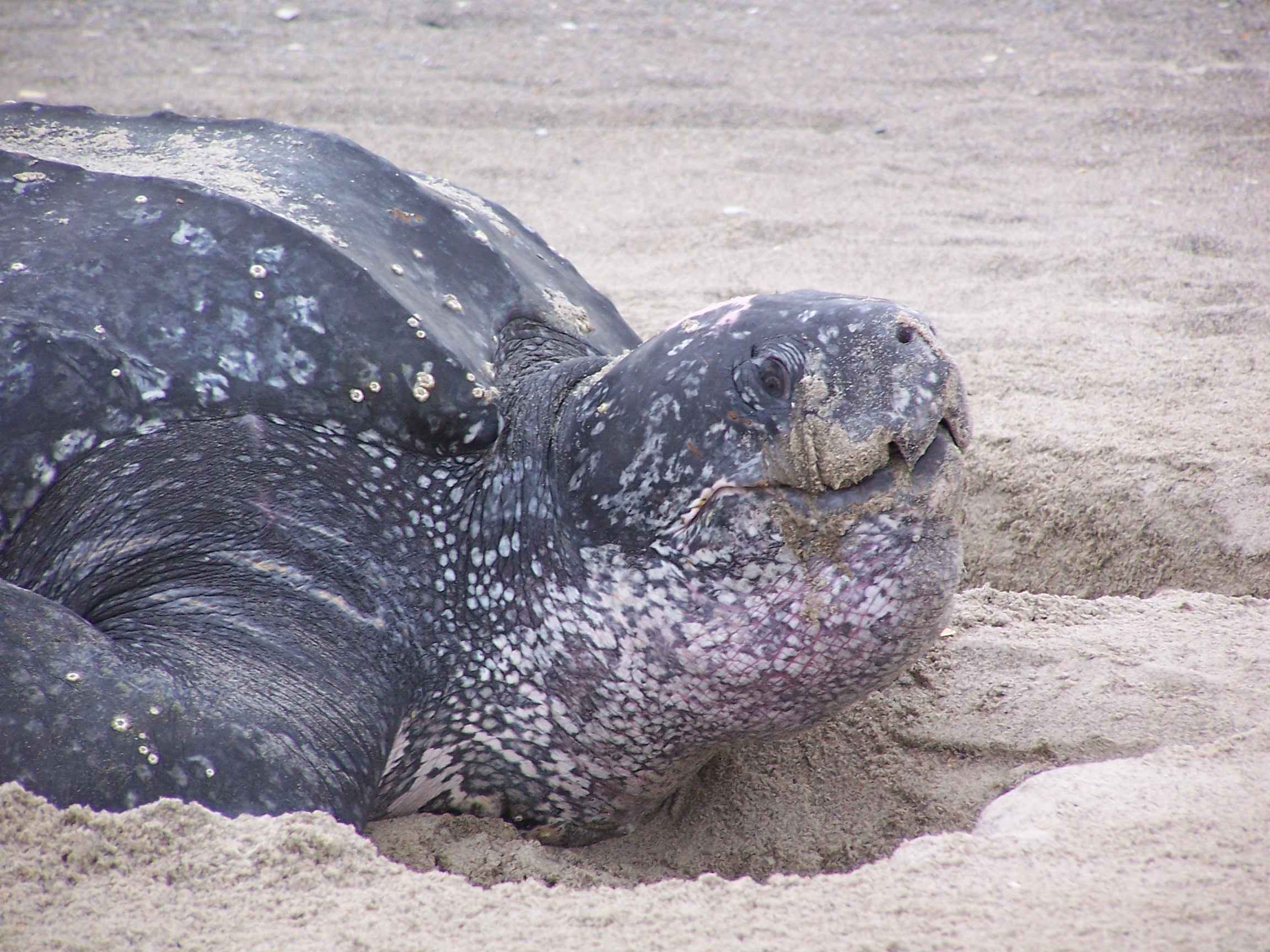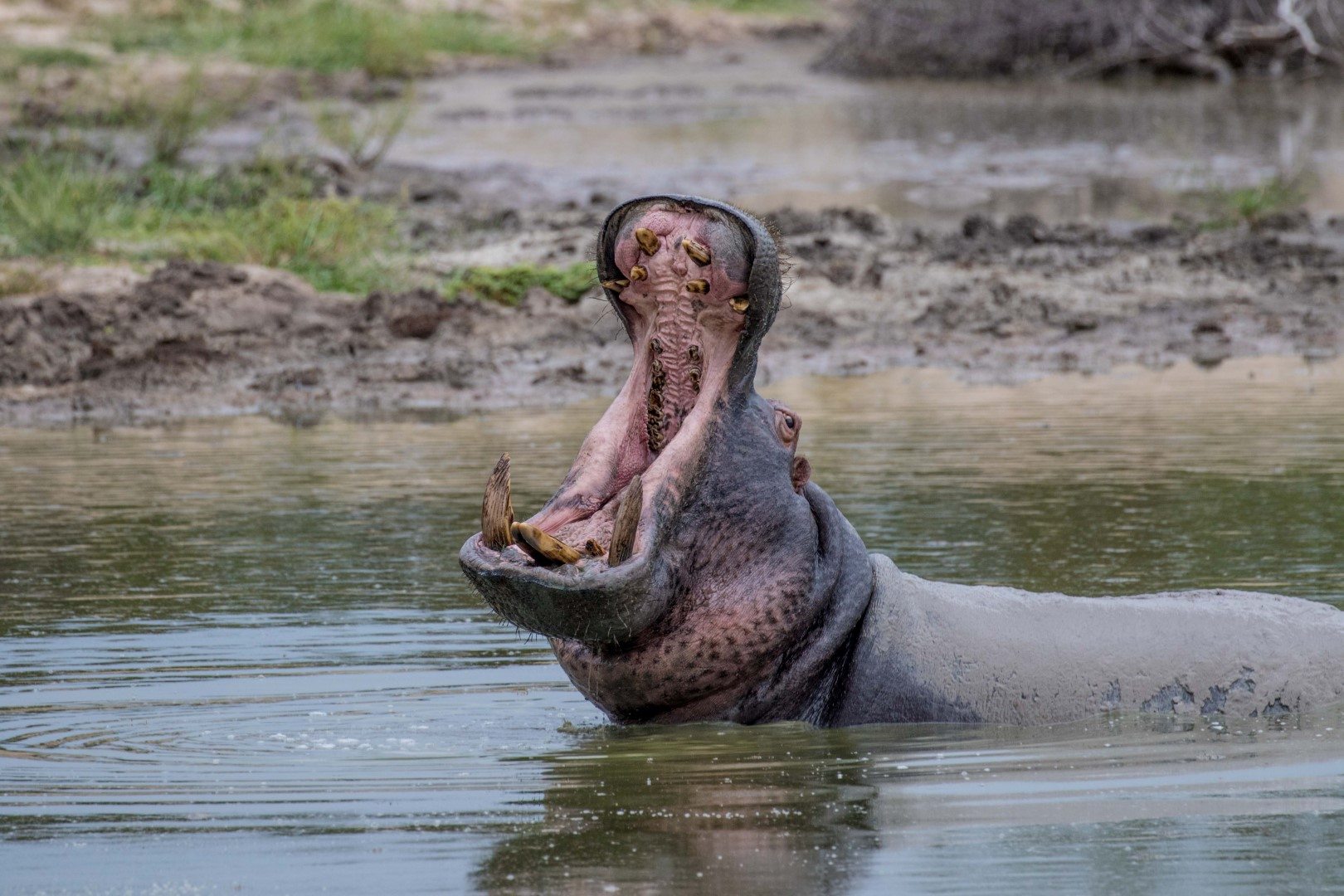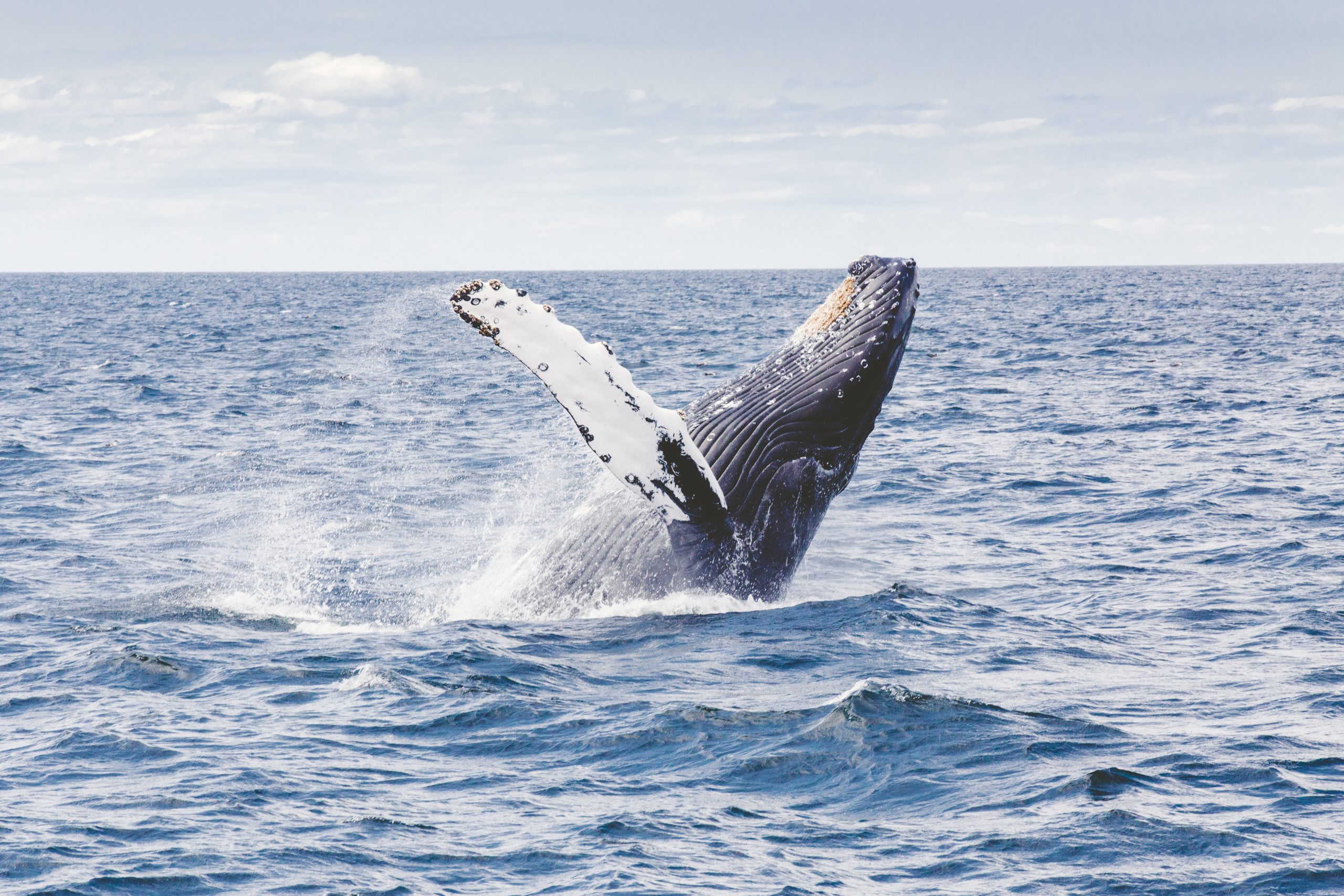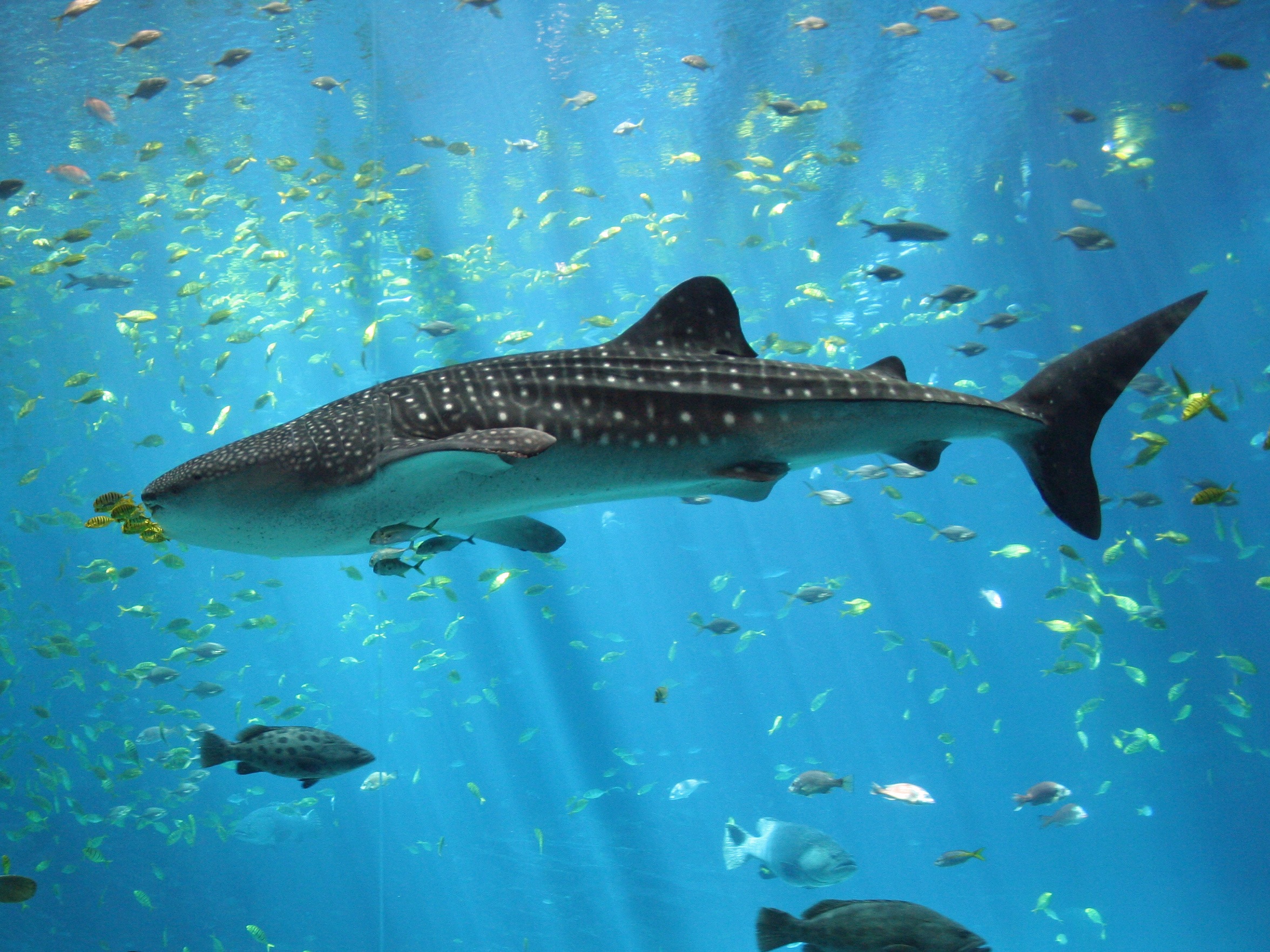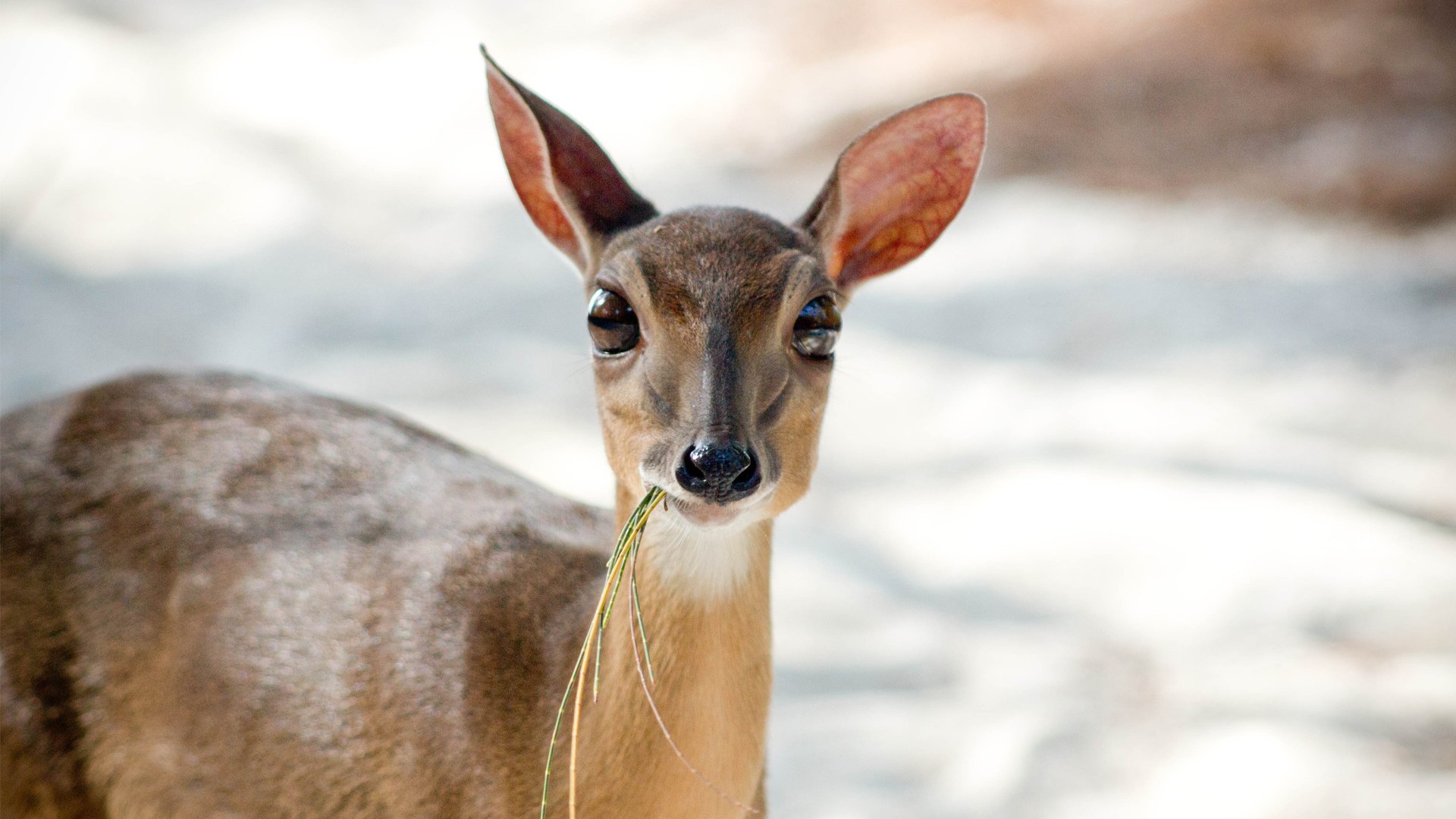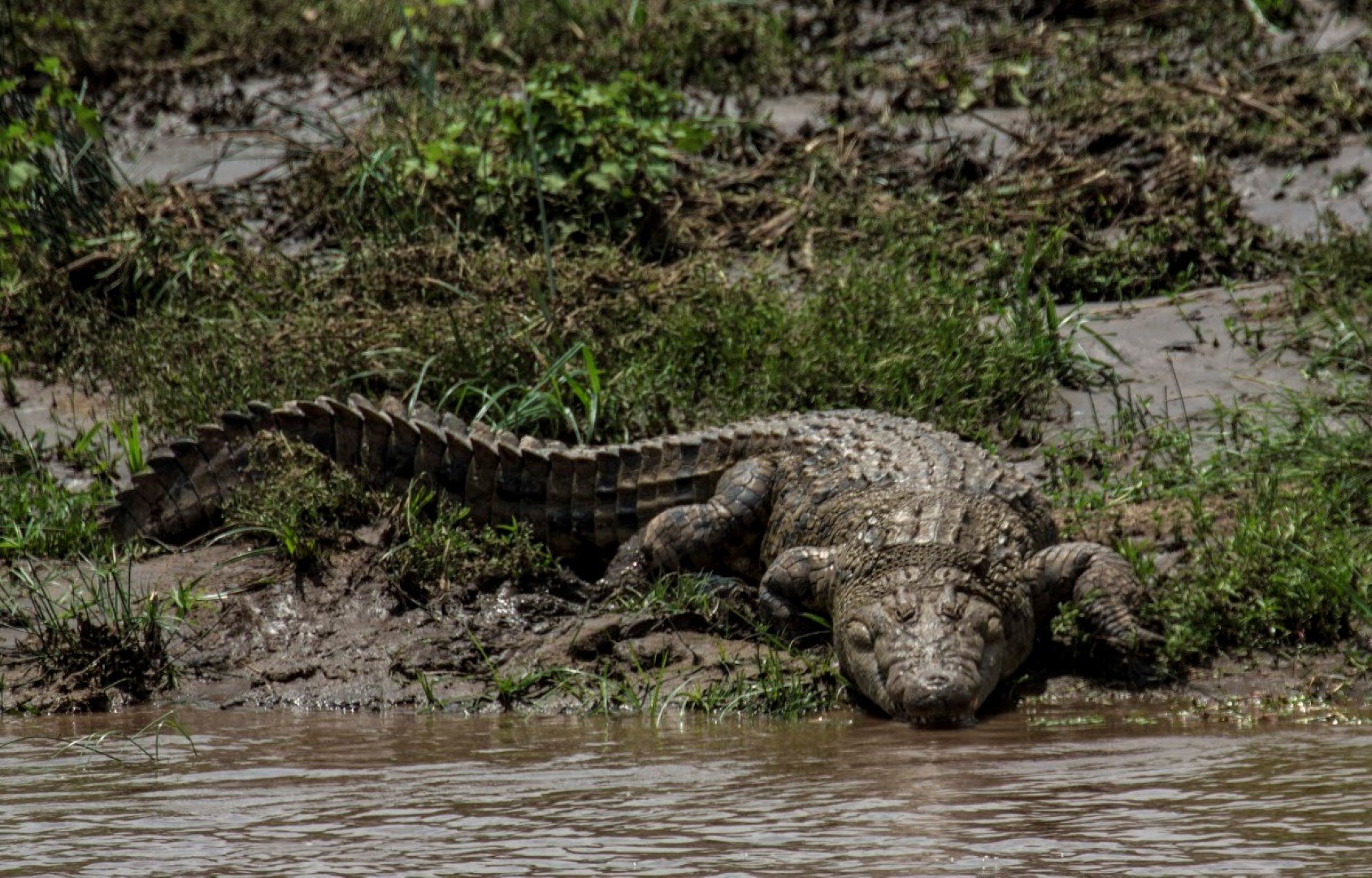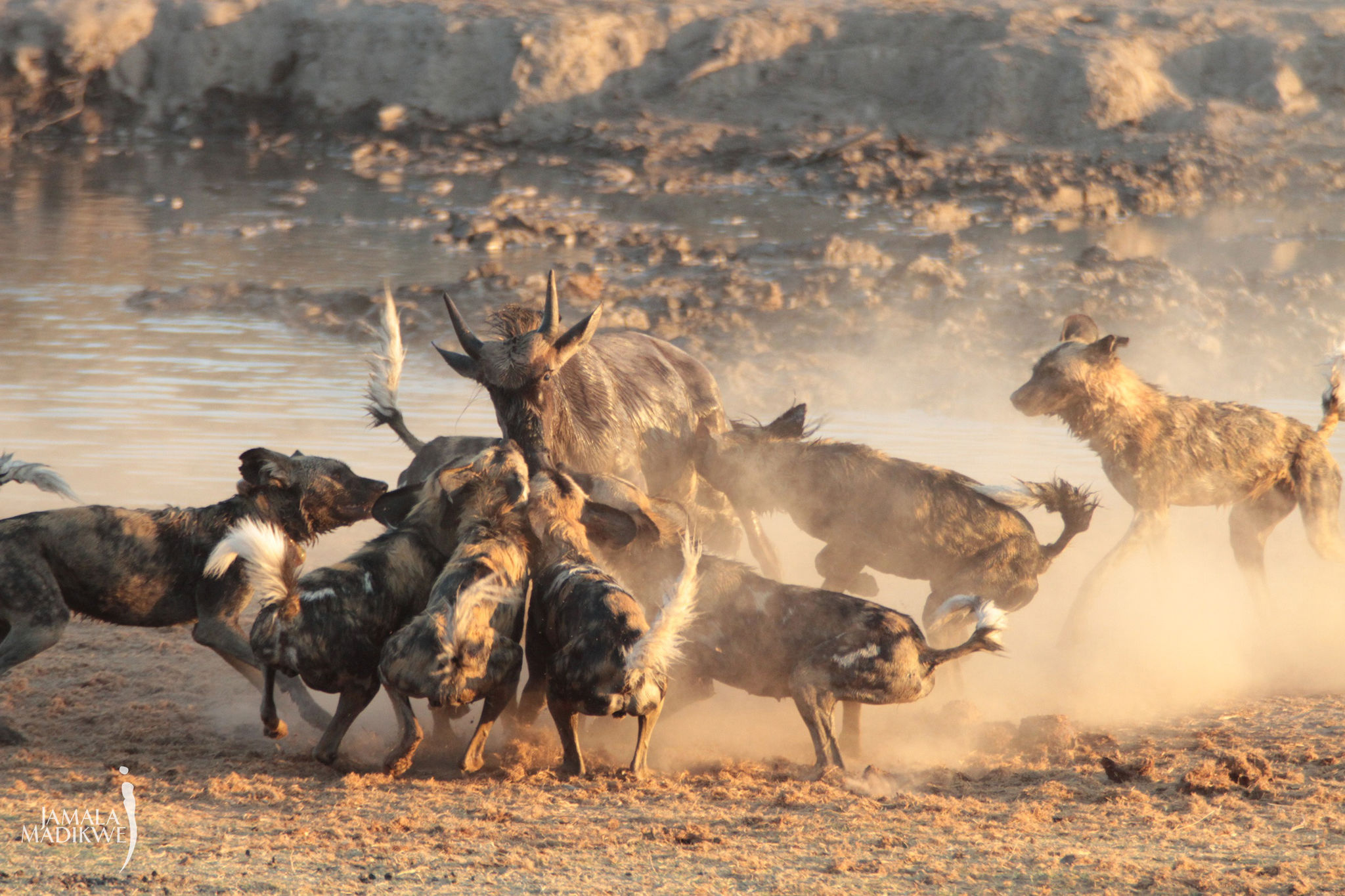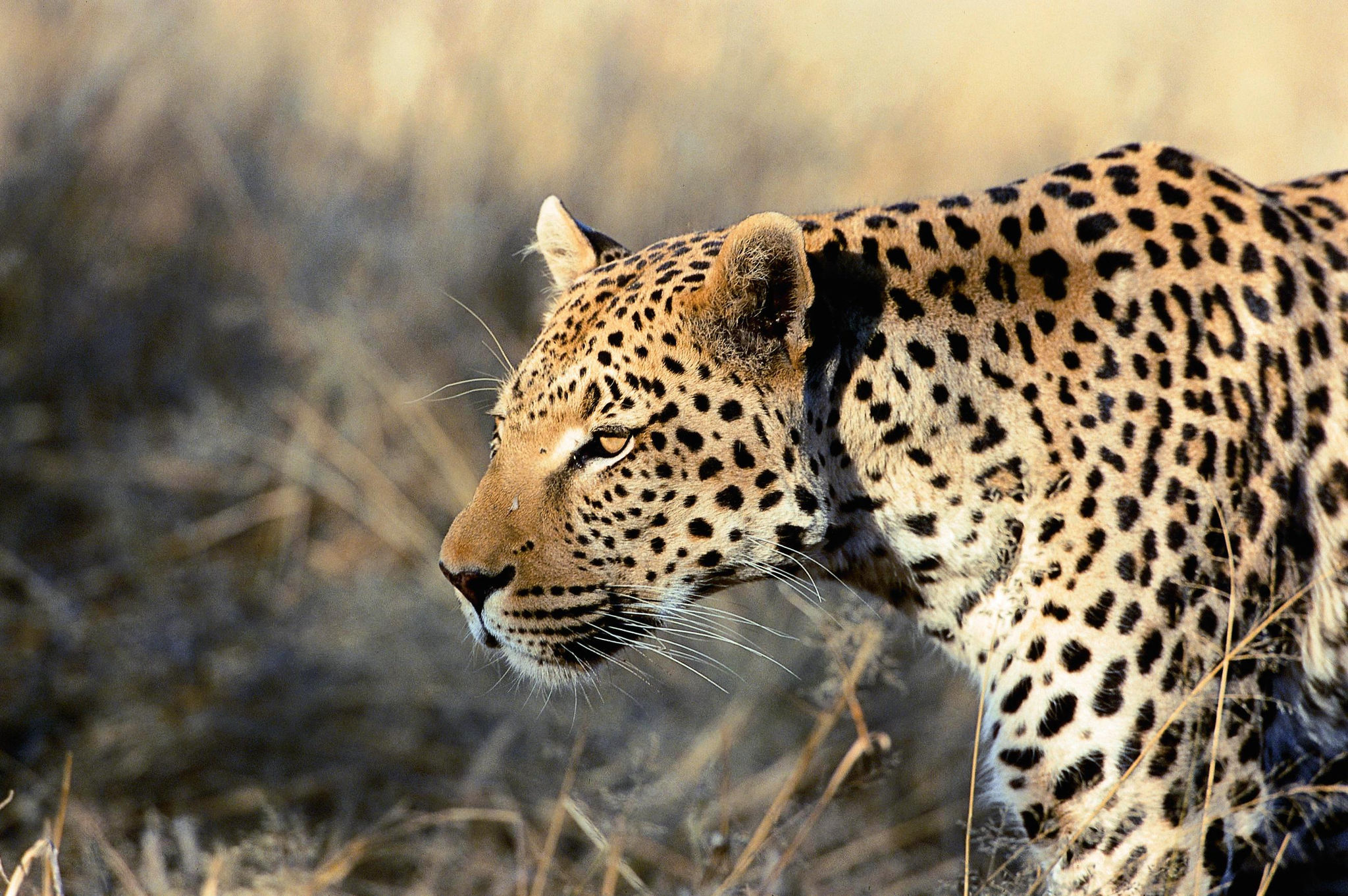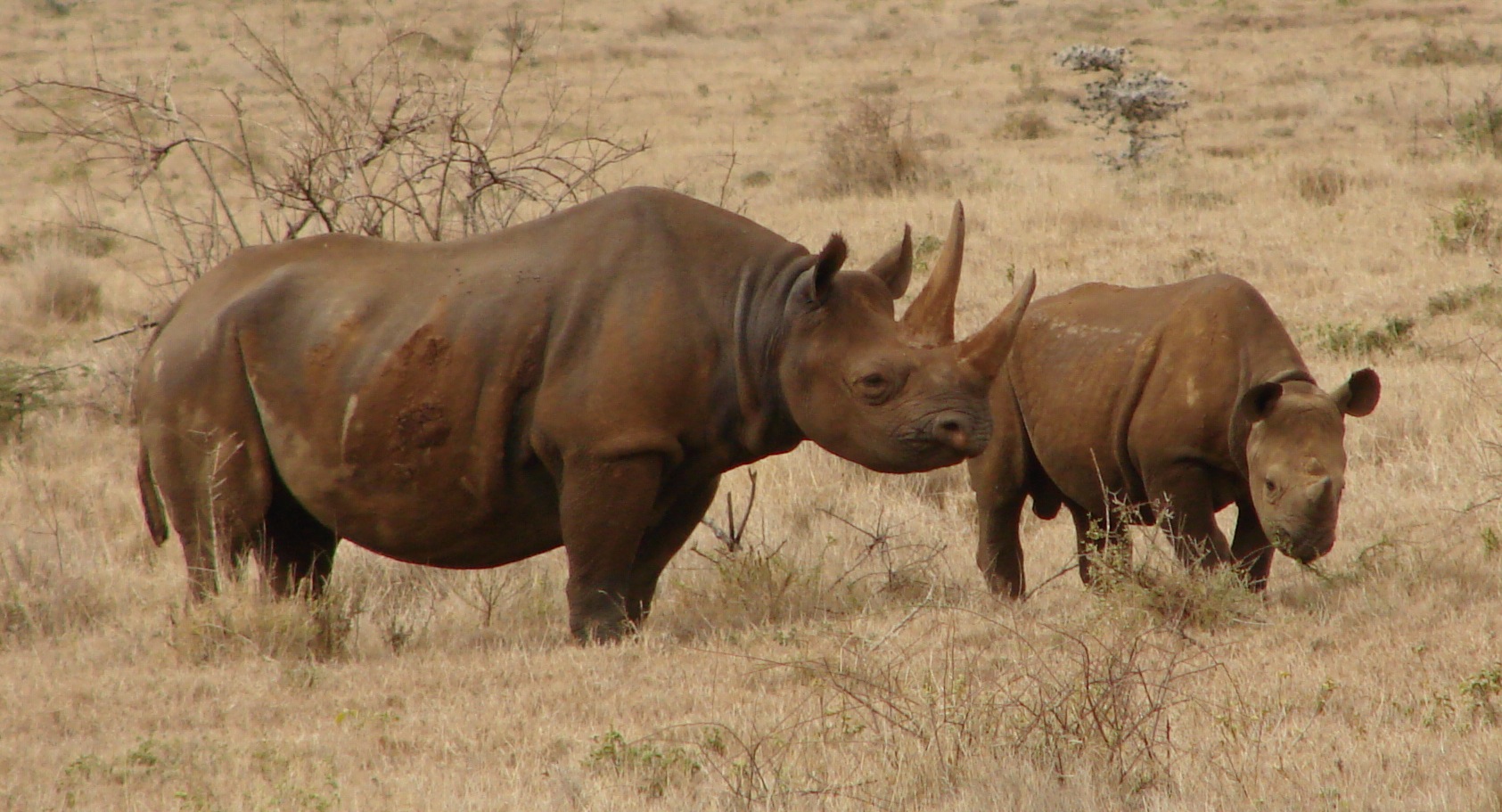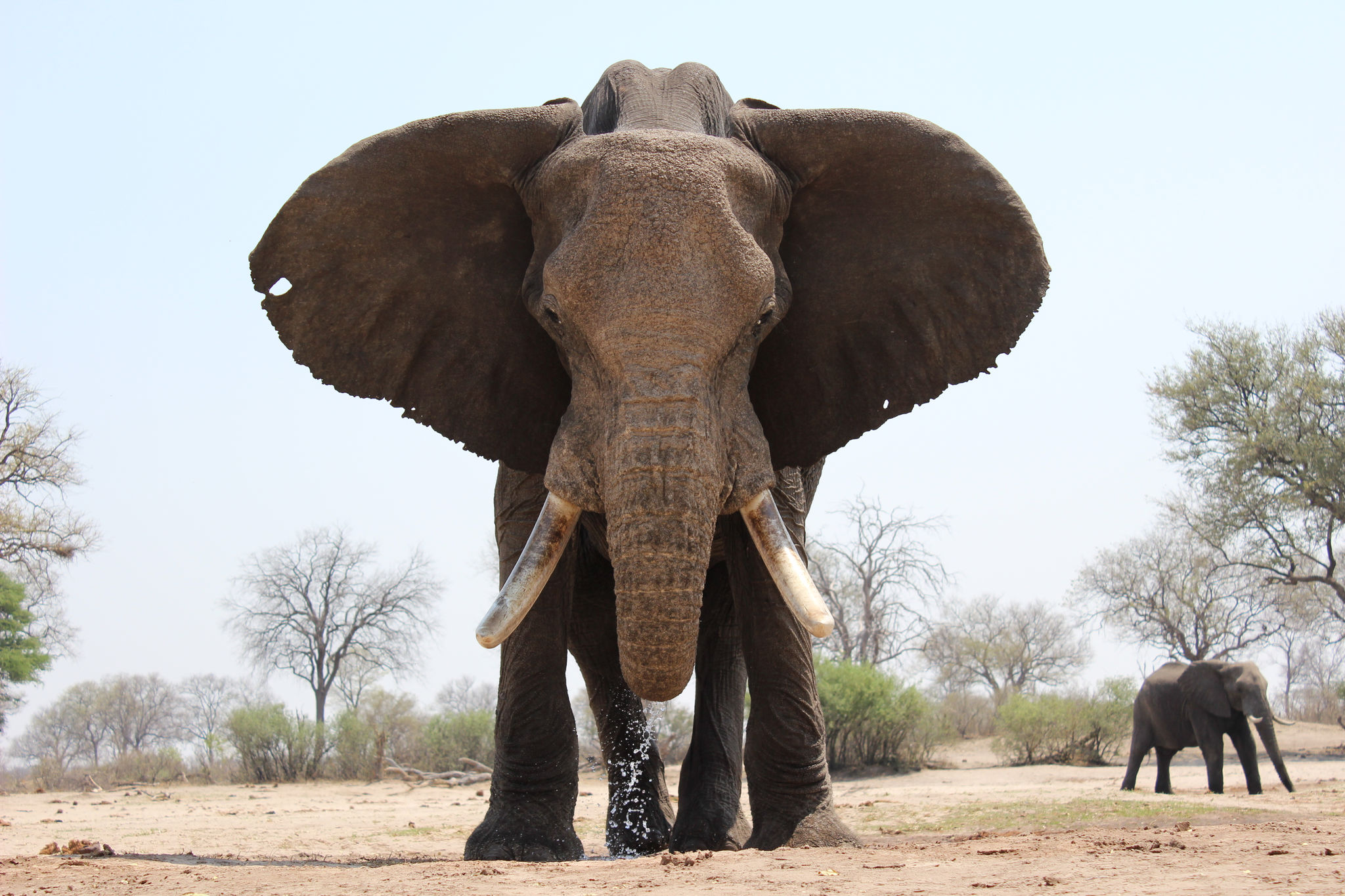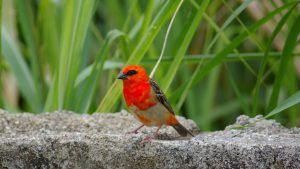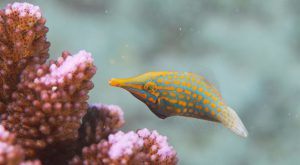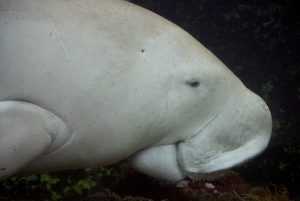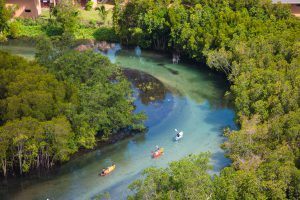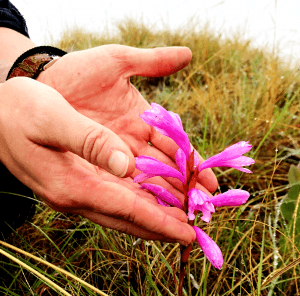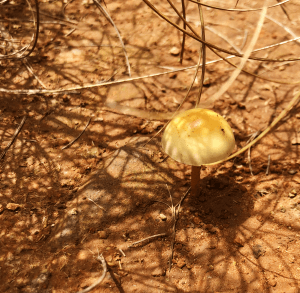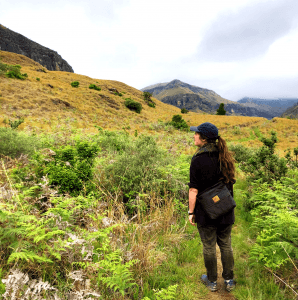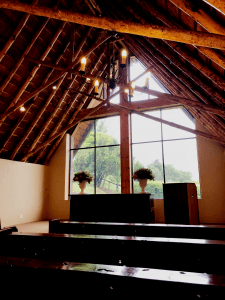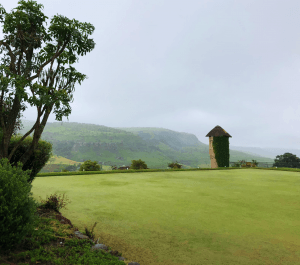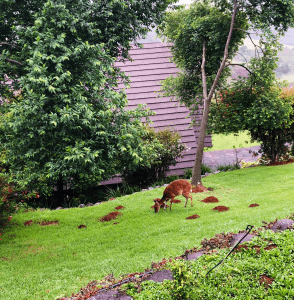If you’re looking for unique safari experiences in Namibia, then you’d better tap into your inner 4×4 adventurer and join us for a rugged ride into the wonders of this land of contrasts! A place where you can see unusual wildlife, fly over towering dunes, and spot seals on shipwreck-strewn coastlines, Namibia is not your typical safari destination.

Explore desert and alien-like terrains in dreamy Namibia
Walking Safari in Damaraland
Embark on an intimate expedition into the heart of Damaraland’s untamed terrain, immersing yourself in the hypnotic allure of the vast open landscapes. Trust us when we say there’s no better way to experience it close up and personal than on foot. Doing so lets you truly appreciate the intricate details of the terrain at your own pace.
On a walking safari, you’ll discover a spectacular array of unique wildlife, including desert-adapted elephants, lions, and black rhinos, which roam freely among the boulder-strewn valleys. While exploring, take your time to appreciate nature’s finer details, like bustling beetles and lazy lizards making their home among the volcanic rock shards.
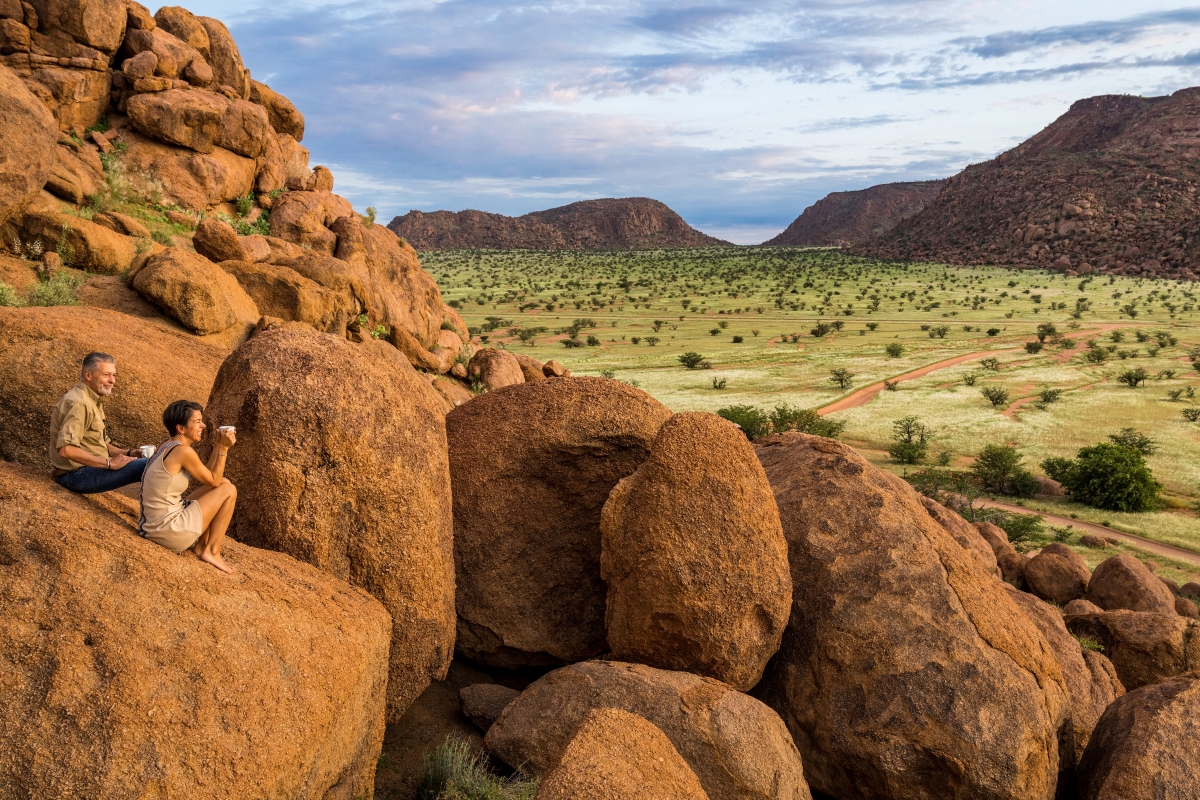
Unique safari experiences in Namibia on foot get you up close and personal with nature, Image Credit: Mowani Mountain Camp
Highlights of a walking safari in Damaraland include tracking rhinos in their natural habitat, hiking up the iconic Brandberg Mountain to view the famous “White Lady” Bushmen paintings, and exploring the rocky outcrop of Twyfelfontein, home to an abundance of Bushmen engravings.
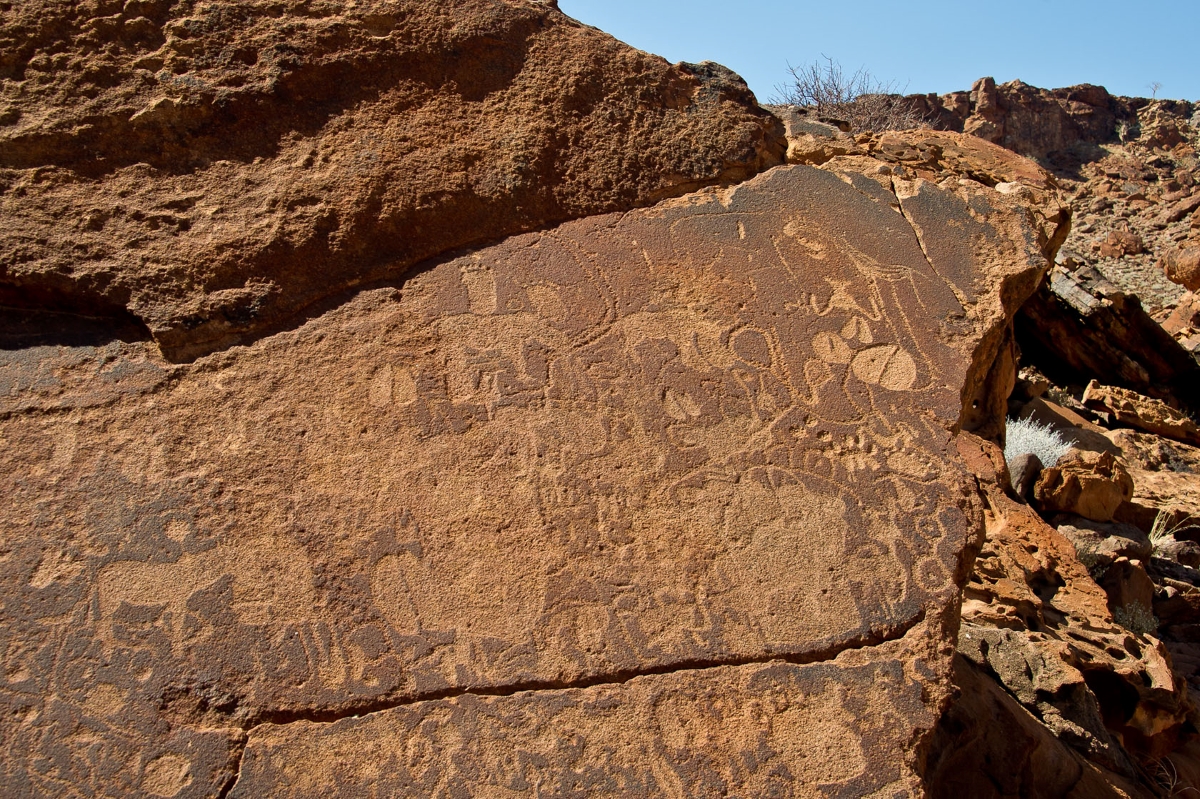
Find both Bushmen rock paintings and engravings, Image Credit: Doro Nawas
Game Viewing in Etosha National Park
Etosha National Park is an enchanting destination that offers safari experiences in Namibia unlike any other. Notably, the national park boasts an incredibly diverse range of wildlife, with over 114 mammal species and 340 species of birds. As such, it is a true paradise for nature enthusiasts and adventurers alike.
Once a vast inland sea that has since dried up over millennia, the Etosha Pan is now a dreamy dry expanse. Yet, even in its arid state, the pan is home to an array of wildlife due to algae that bloom across its surface after the summer rains. During this time, flamingos and other feathered friends flock to the region’s nutrient-rich soils.
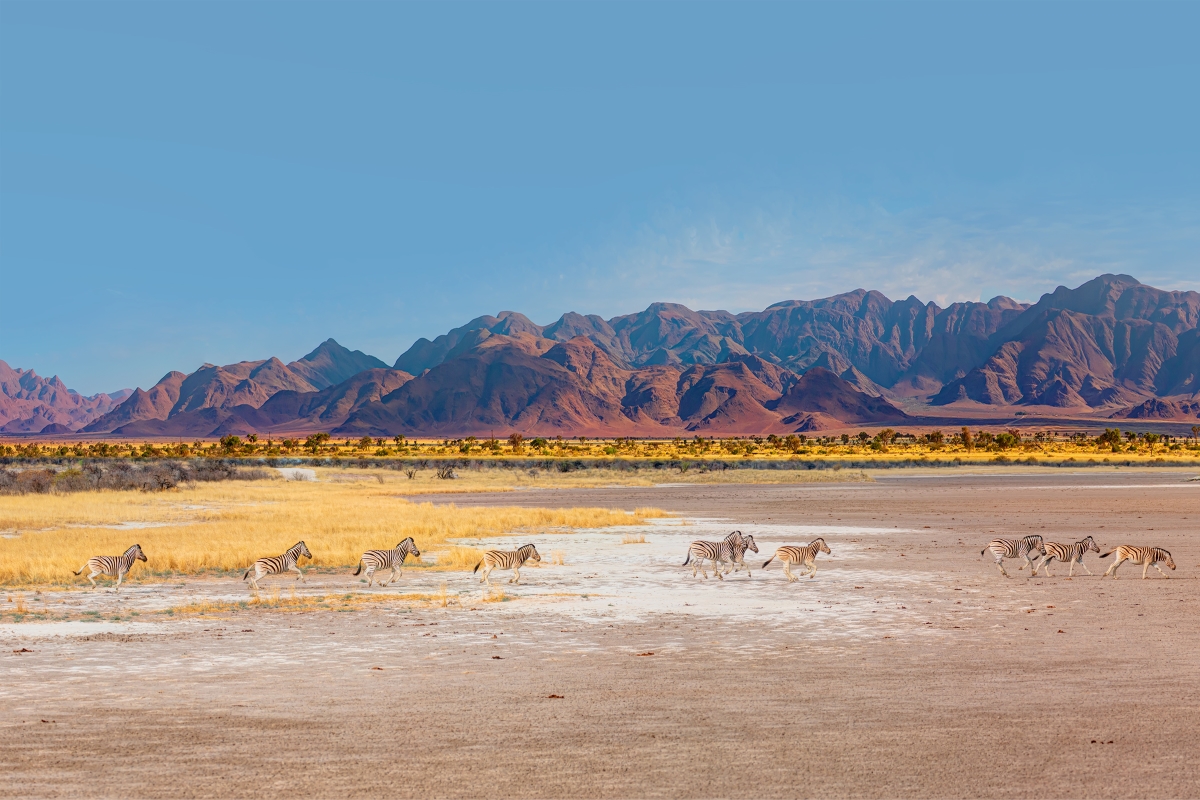
Varied vegetation within Etosha National Park nourishes countless herds of plains game
The dry season is the best time to witness Etosha’s abundant wildlife, as the perennial water sources become crowded with a variety of plains game, from zebra to wildebeest. Furthermore, Etosha’s remarkable conservation efforts provide refuge for endangered species such as the black rhino, black-faced impala, and Tsessebe.
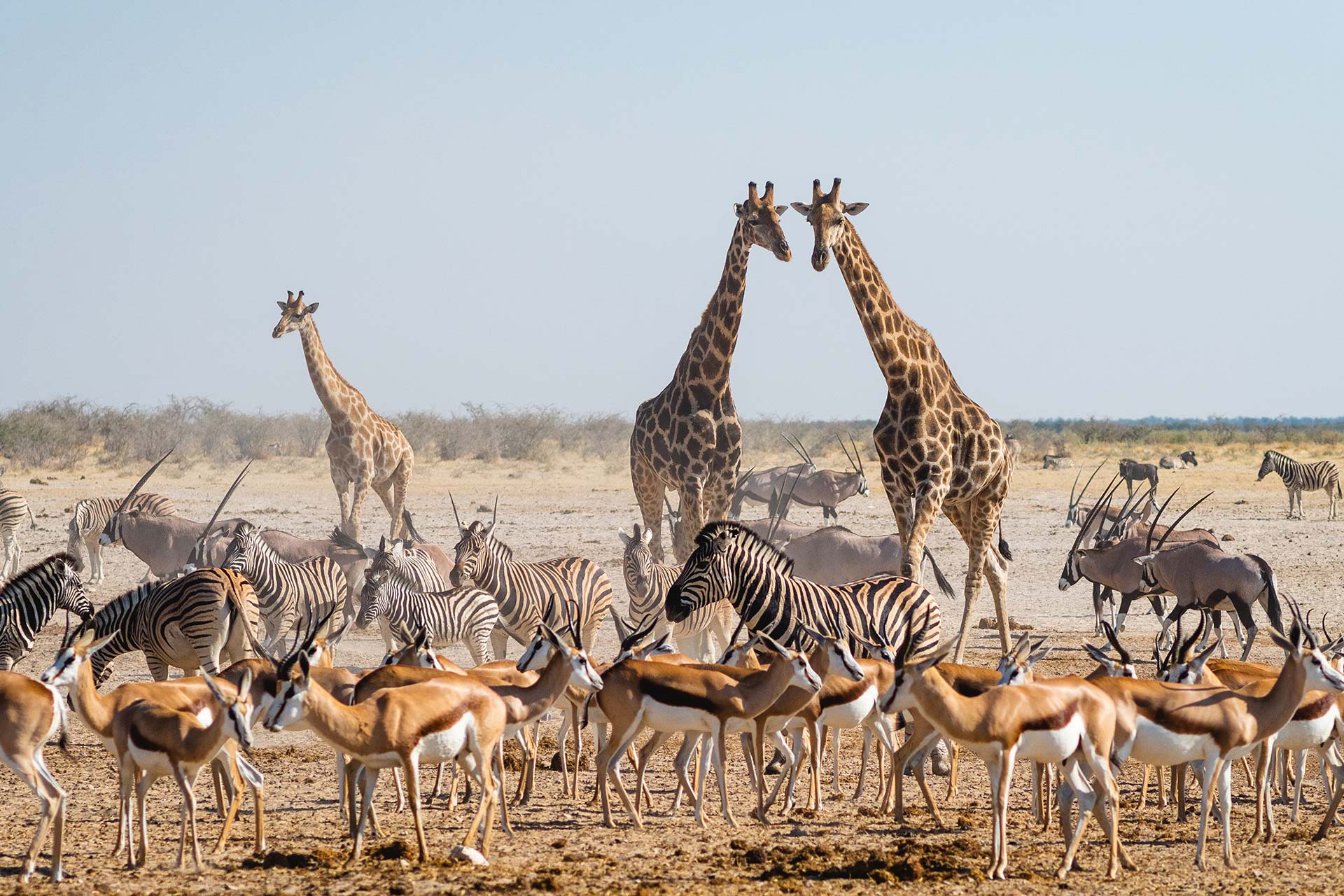
A meeting place for all kinds of species, Image Credit: R.M. Nunes
Balloon Safari in Sossusvlei
Picture this: you’re soaring high above the surreal landscape of Sossusvlei in a giant hot air balloon, the wind in your hair and the sun on your face. The towering dunes stretch out before you, a sea of reds and orange hues as far as the eye can see. But this isn’t just any old sightseeing trip – you’re on a balloon safari, and the view is out of this world.
As you gracefully drift along, you’ll have the opportunity to spot all kinds of rare wildlife, from oryx to ostriches, going about their business below. And all around you, the vastness of the Namib Desert stretches out to the horizon in a mesmerising expanse of sand and sky.
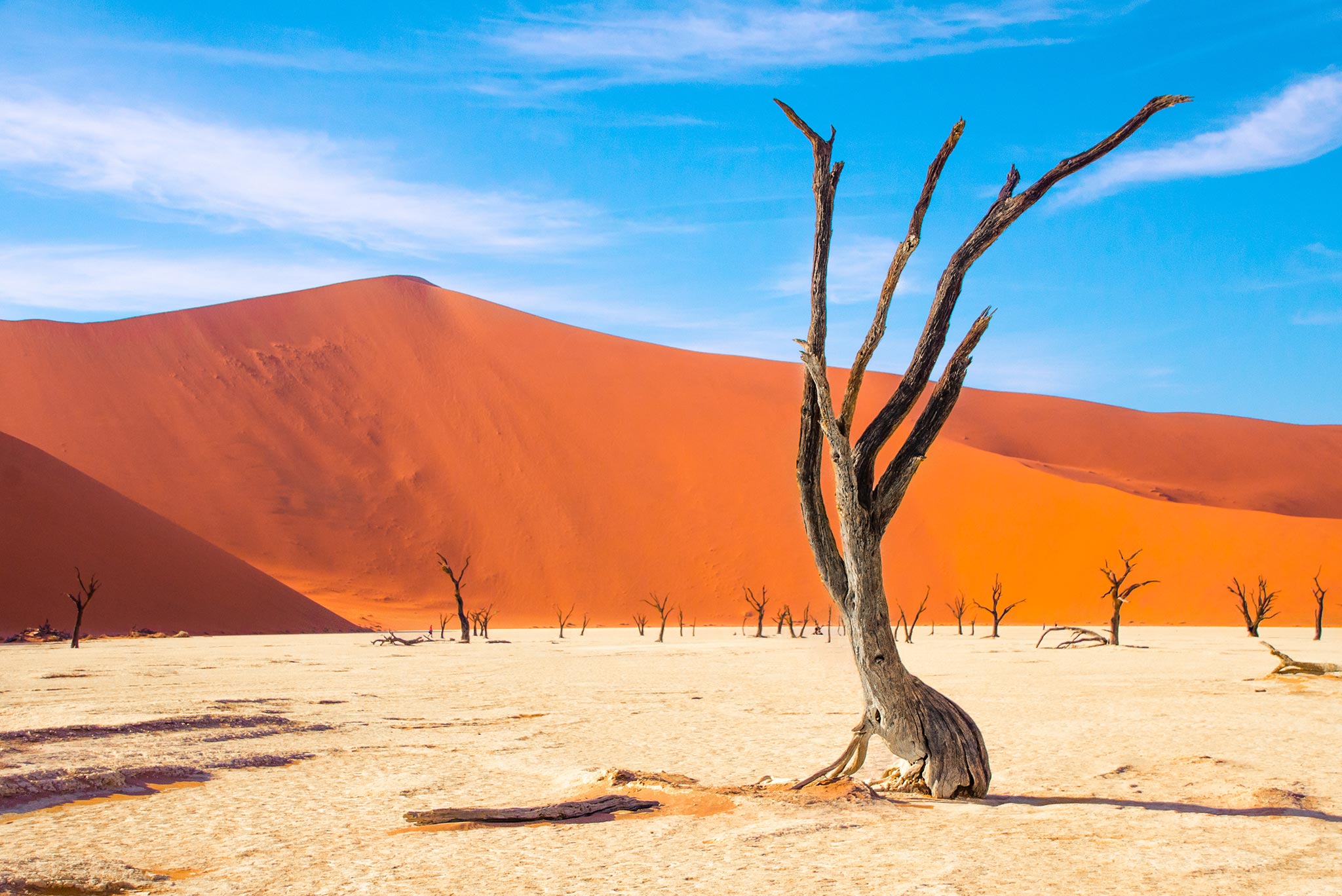
We love visiting Sossusvlei in the Namib Desert
But it’s not just the view that’s amazing – it’s the experience of being up in the air, weightless and free, that makes a balloon safari in Sossusvlei truly unforgettable. So why not take to the skies and see this magical landscape from a whole new perspective? Trust us, it’ll be a ride you’ll never forget!
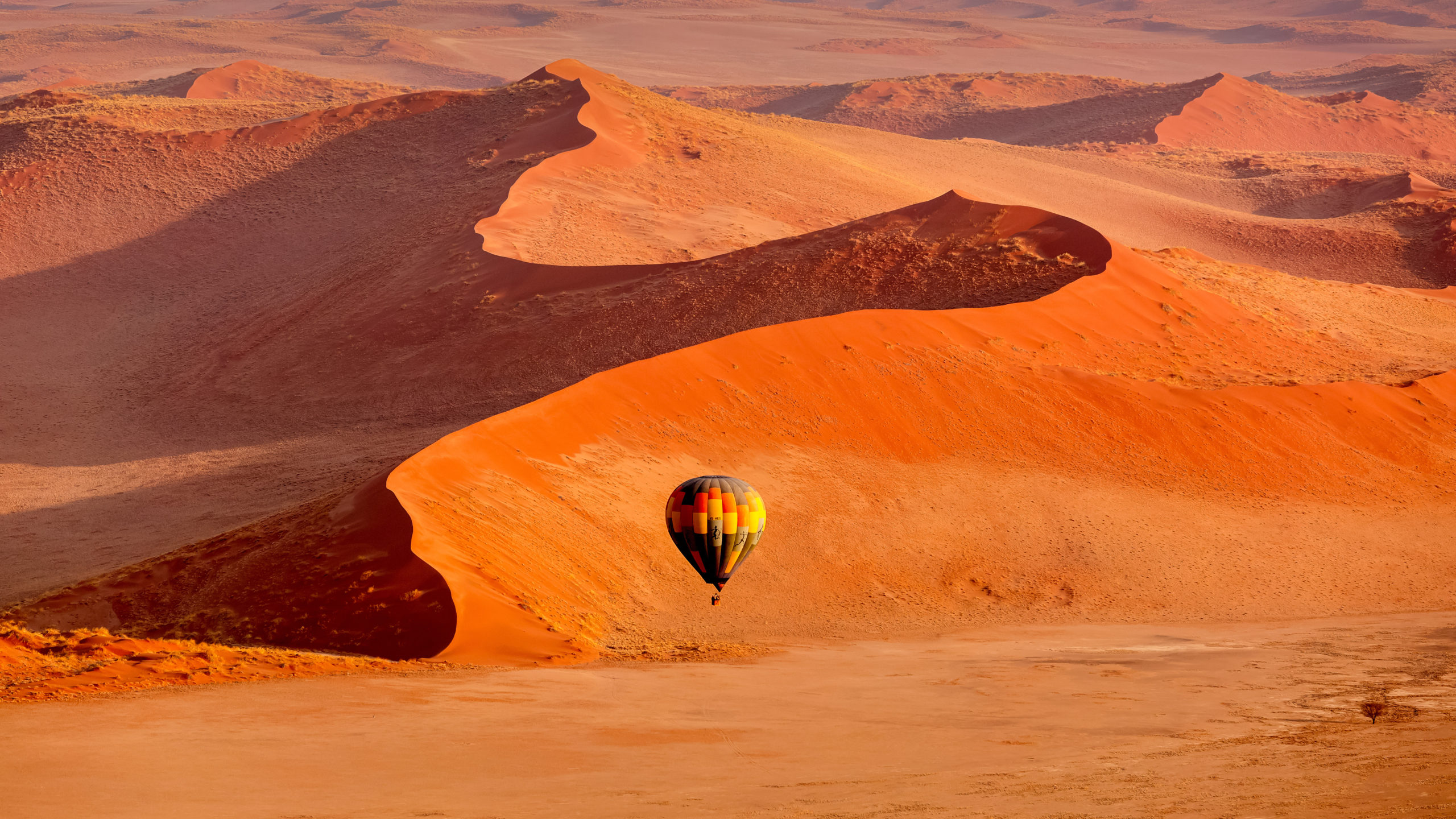
Floating above ruby-red dunes in a hot air balloon is one of the safari experiences in Namibia that you will never forget
Ocean Safari in Swakopmund
If you’re looking for an adventure on the high seas, look no further than Swakopmund! This charming seaside town, fringing the edge of the Namib Desert, is more than just a pretty face with its German-inspired architecture and frothy October brews.
Get ready to set sail on an ocean safari, feeling the salty spray on your face and the wind in your hair as you cruise along the Atlantic Ocean. Keep your eyes peeled for playful dolphins, curious seals, silly pelicans and other animated marine life. And, if you’re lucky, you might even catch a glimpse of migrating whales in the spring time!
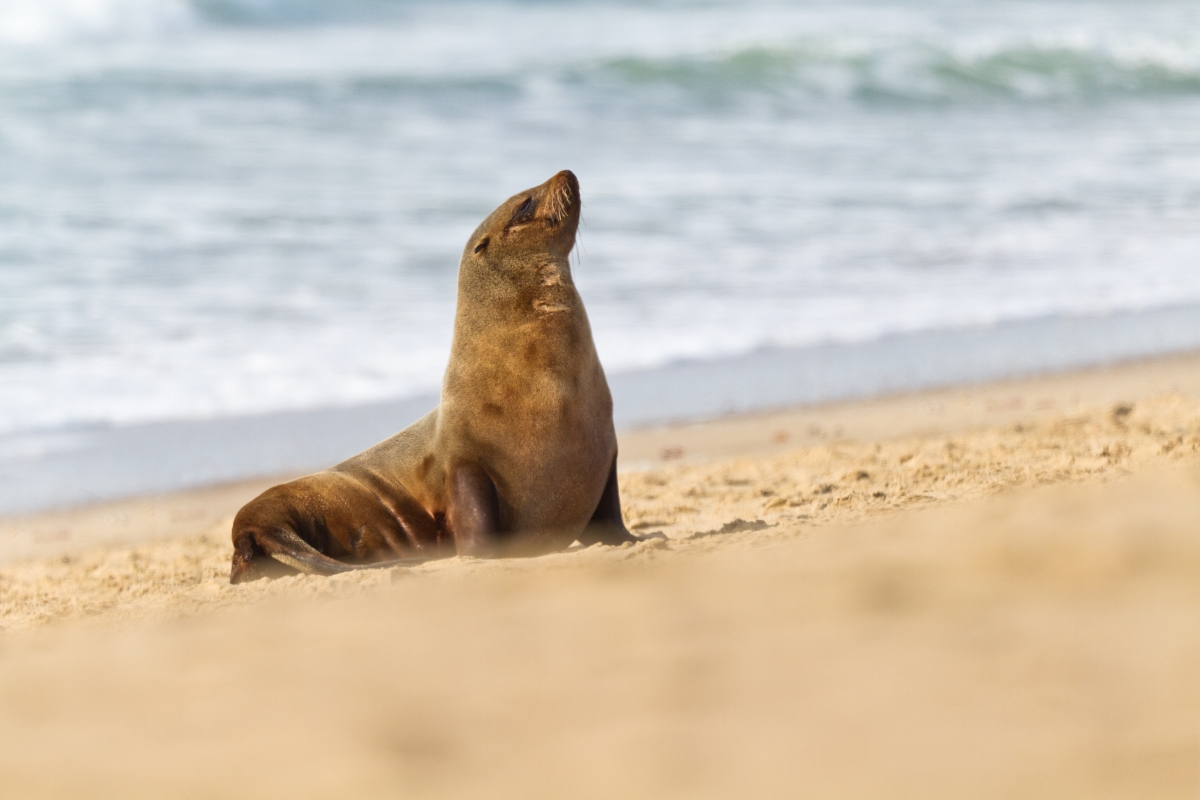
Get close to the marine and birdlife in the Swakopmund area
But it’s not just about the marine and birdlife – the clash of the elements at this meeting point of the dunes and ocean is also a sight to behold. Plus, you can witness it all from the comfort of a boat. So, embark on a thrilling ocean safari that will leave you with special memories and an insatiable thirst for more!
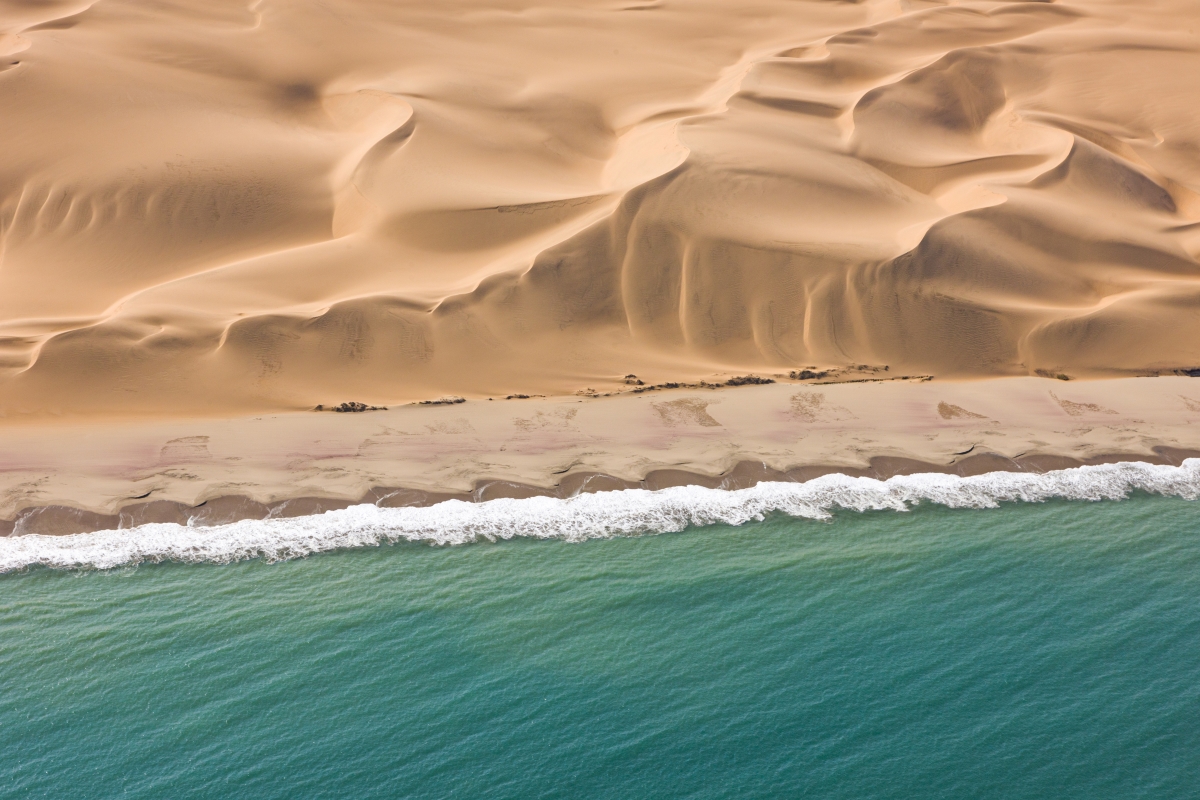
Admire endless ocean safari opportunities in Namibia along the glorious coastline
Spot Rare Wildlife Along the Skeleton Coast
Get ready for safari experiences in Namibia that will leave you in awe! The Skeleton Coast is shrouded in mystery and wonder, boasting a rugged terrain bound to leave you spellbound. Here, the desert meets the sea, with the remains of over 500 sunken ships dotting the shoreline like ancient treasures waiting to tell their tragic tales.
This enigmatic stretch of Namibia’s coastline is home to a fascinating array of rare and exotic wildlife species just waiting to be discovered. From the elusive Hartmann’s mountain zebra to graceful giraffes and desert-adapted elephants, there’s an abundance of incredible creatures roaming free in this magical landscape.
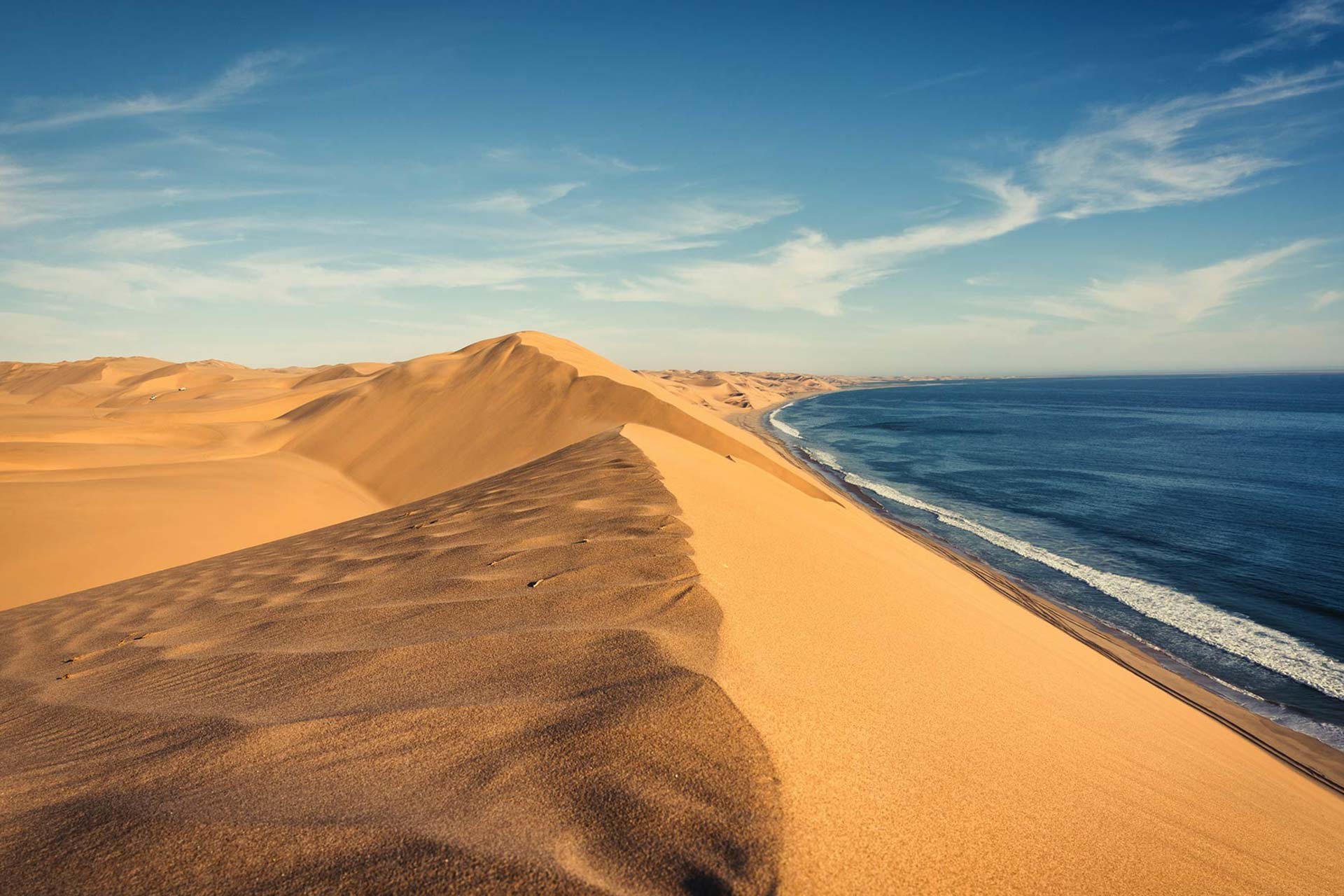
Where the desert meets the ocean
Hold on tight because we’ve got more safari thrills in store. Hop on a 4×4 game drive or take a nature walk to fully immerse yourself in the beauty of this wild wonderland. But for the ultimate adventure, get a bird’s-eye view from the skies to witness lion and hyena in action as they scour the shoreline and riverbeds in search of tasty maritime meals.

Brown hyena skulking around, looking for something to scavenge, Image Credit: Hoanib Skeleton Coast Camp
Enjoy Your Own Safari Activities in Namibia
Whether taking in the sweeping views from a hot air balloon or exploring the jagged terrain on a 4×4 dune drive, Namibia offers amazing experiences replete with fascinating animals and landscapes.
Start planning your safari activities in Namibia today, and get ready to immerse yourself in a world that’s beyond your wildest dreams. Our African Travel Experts can’t wait to plan your dream Namibia safari!



